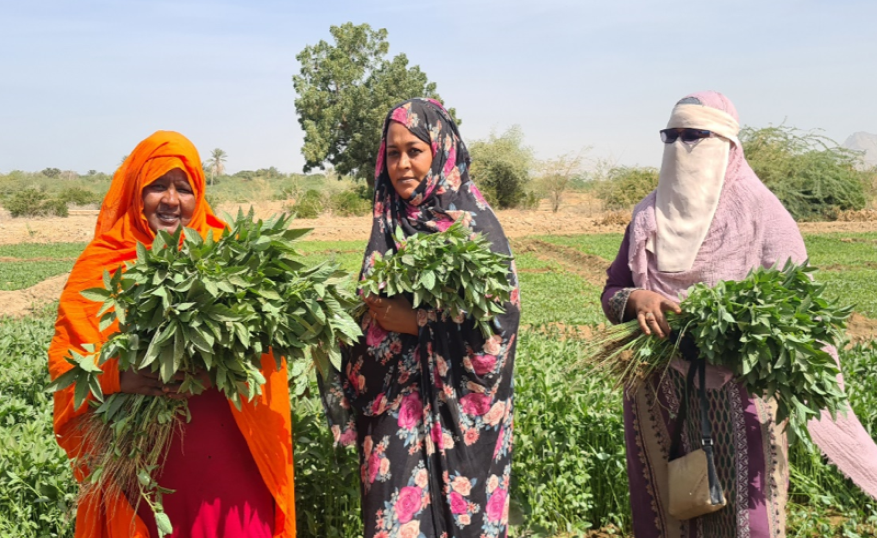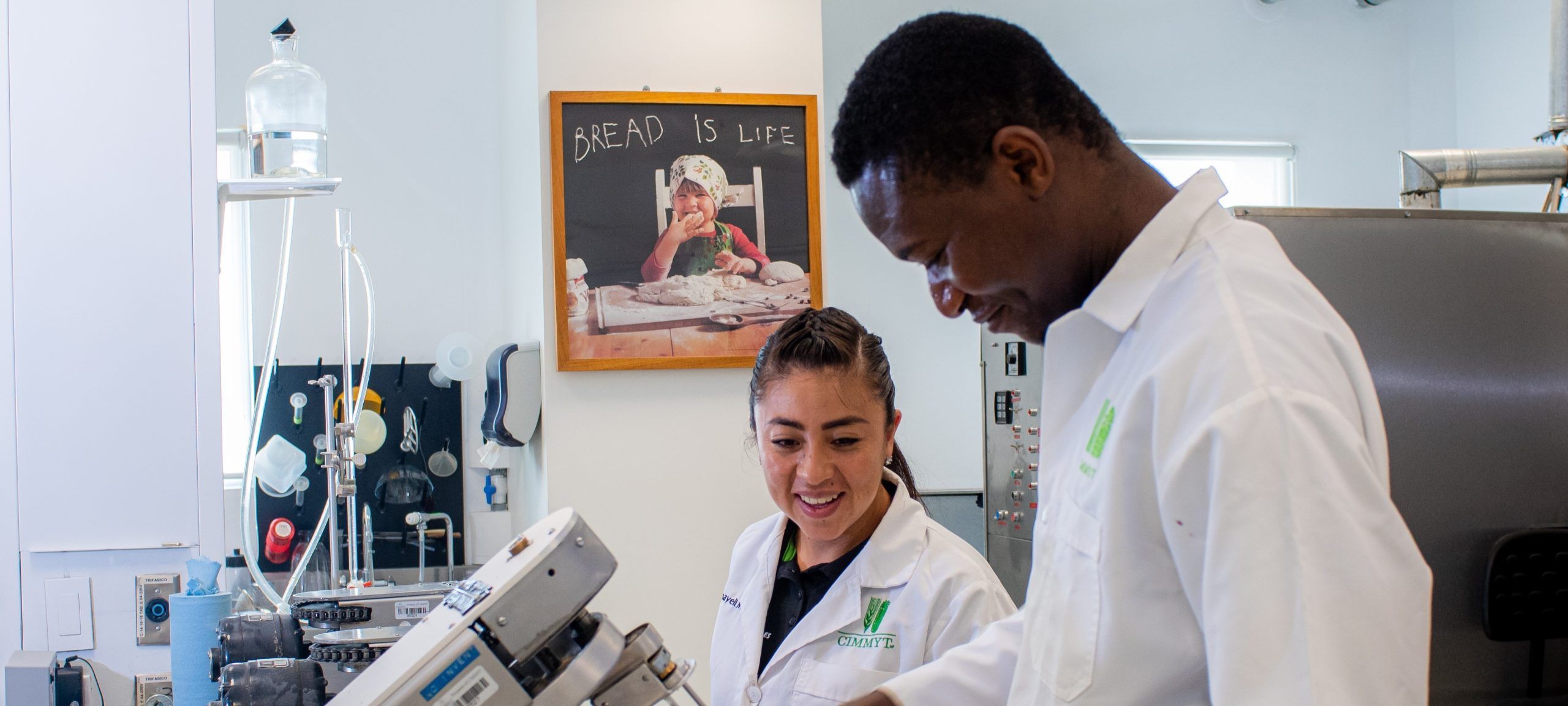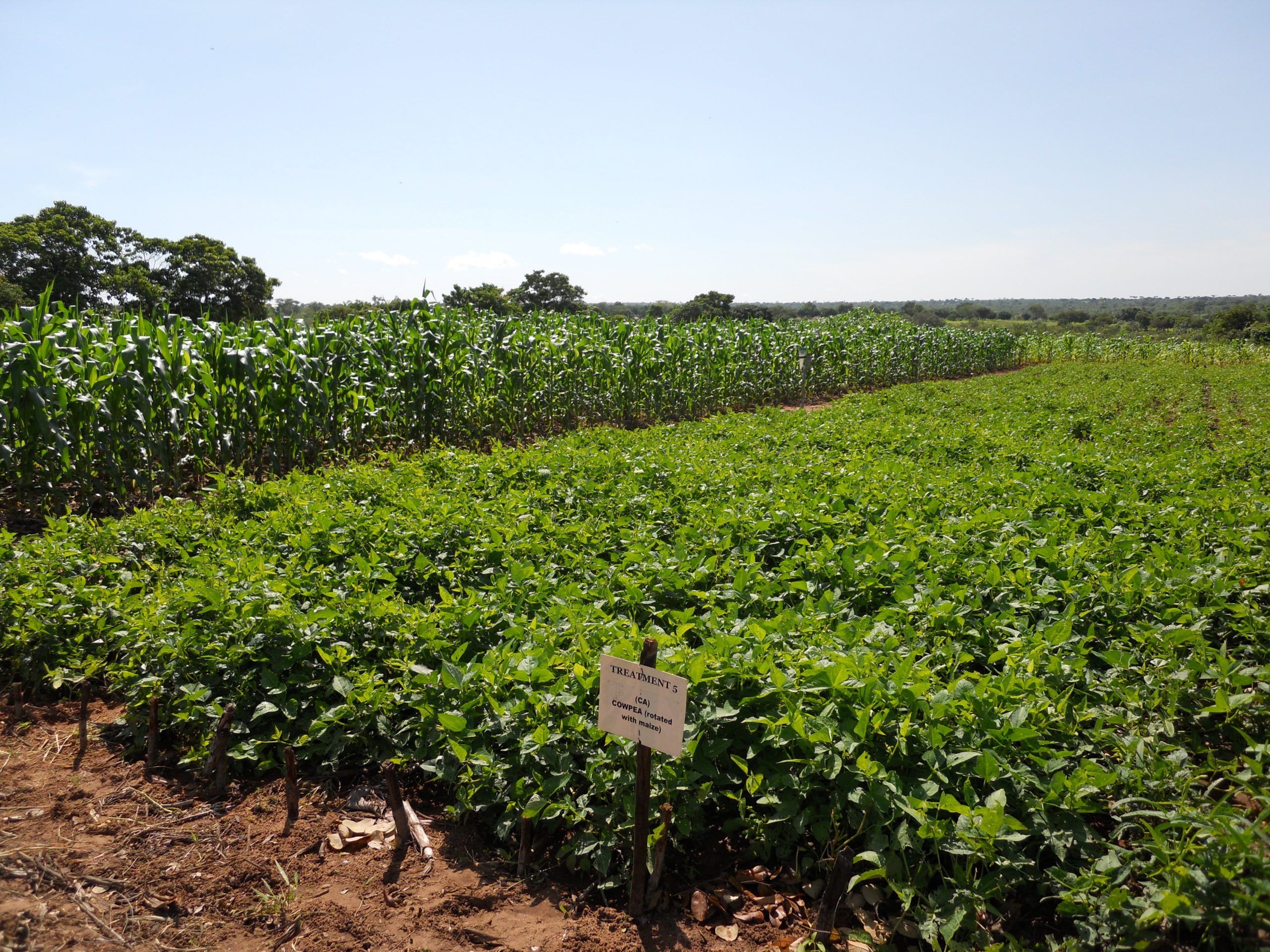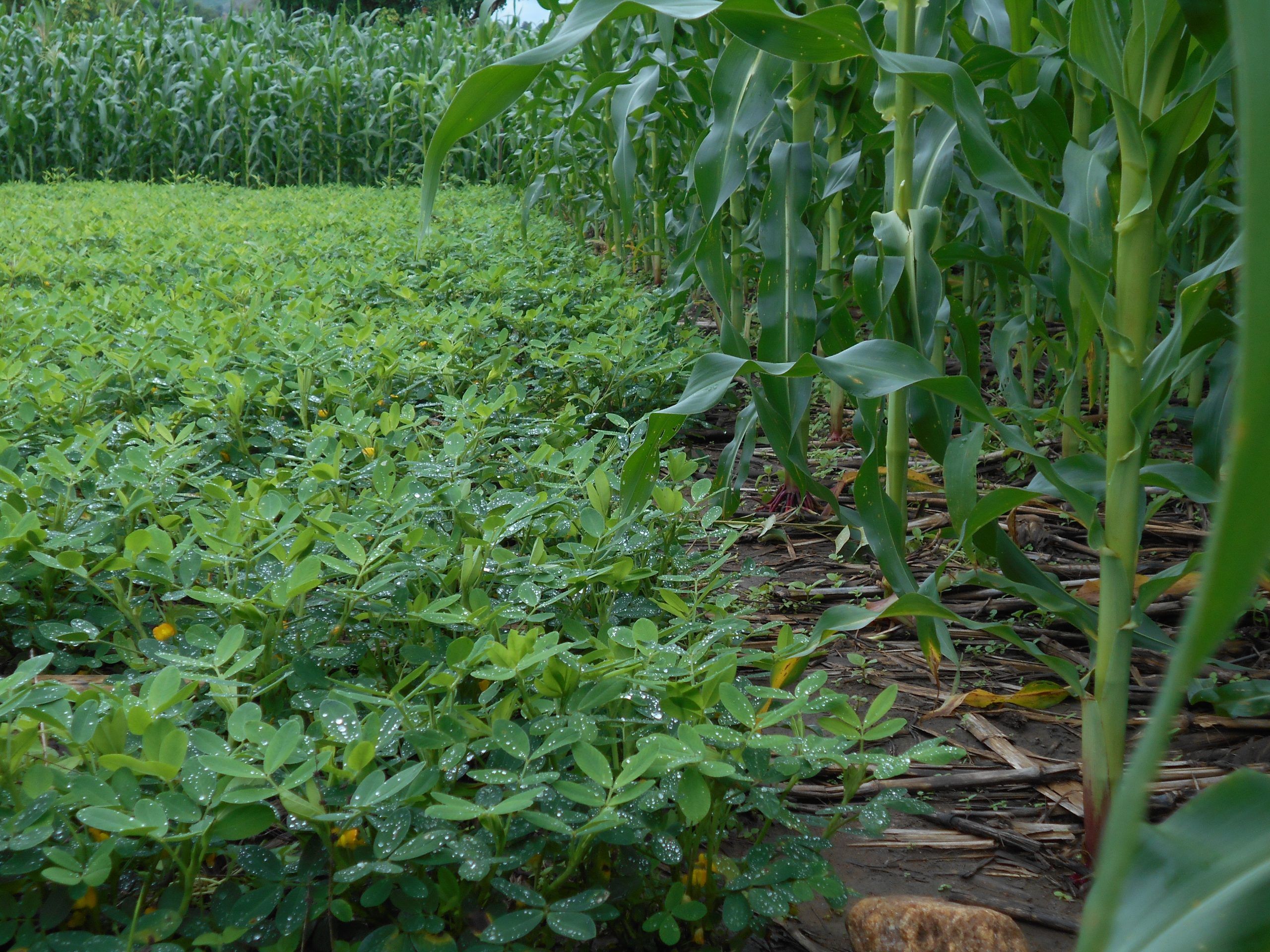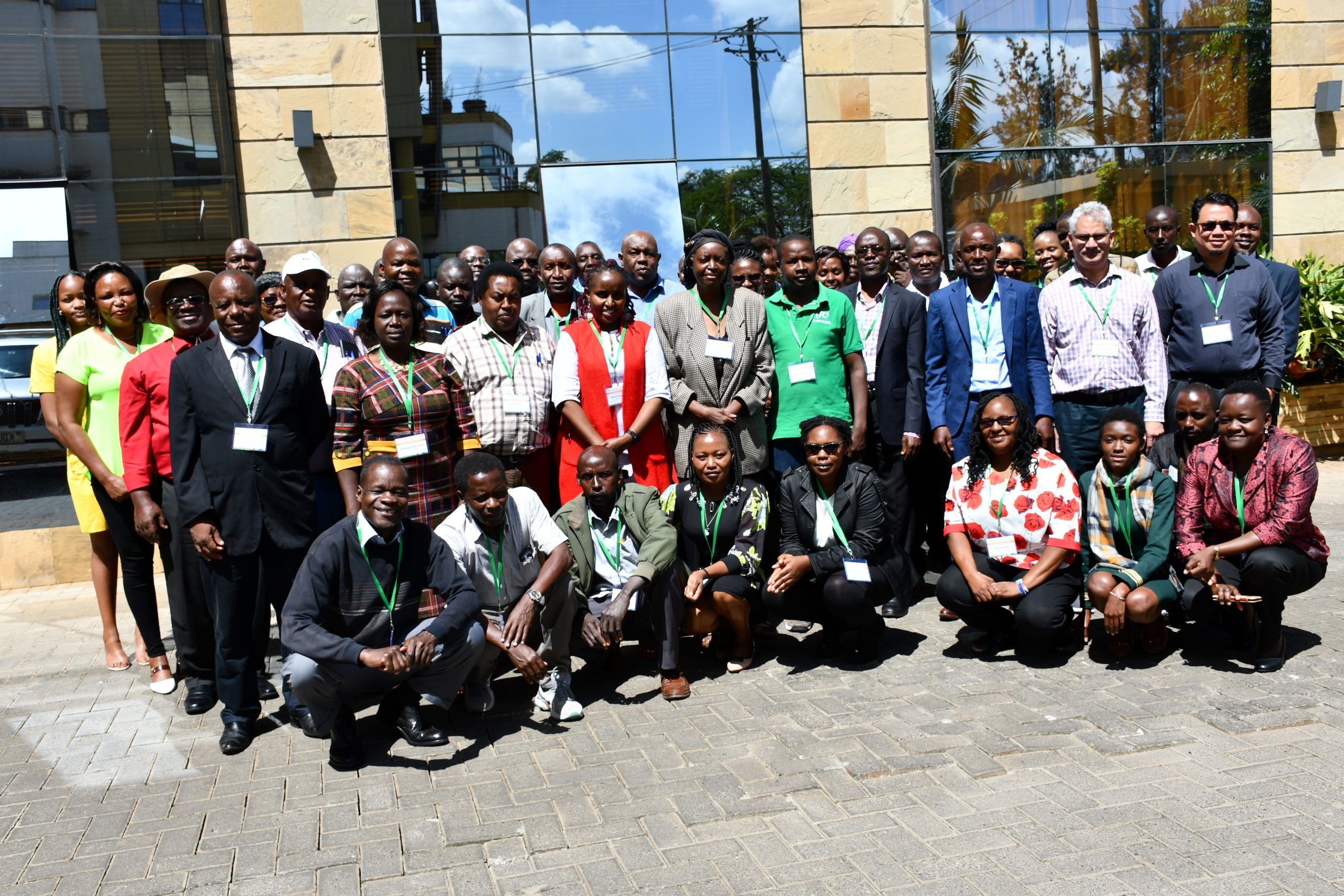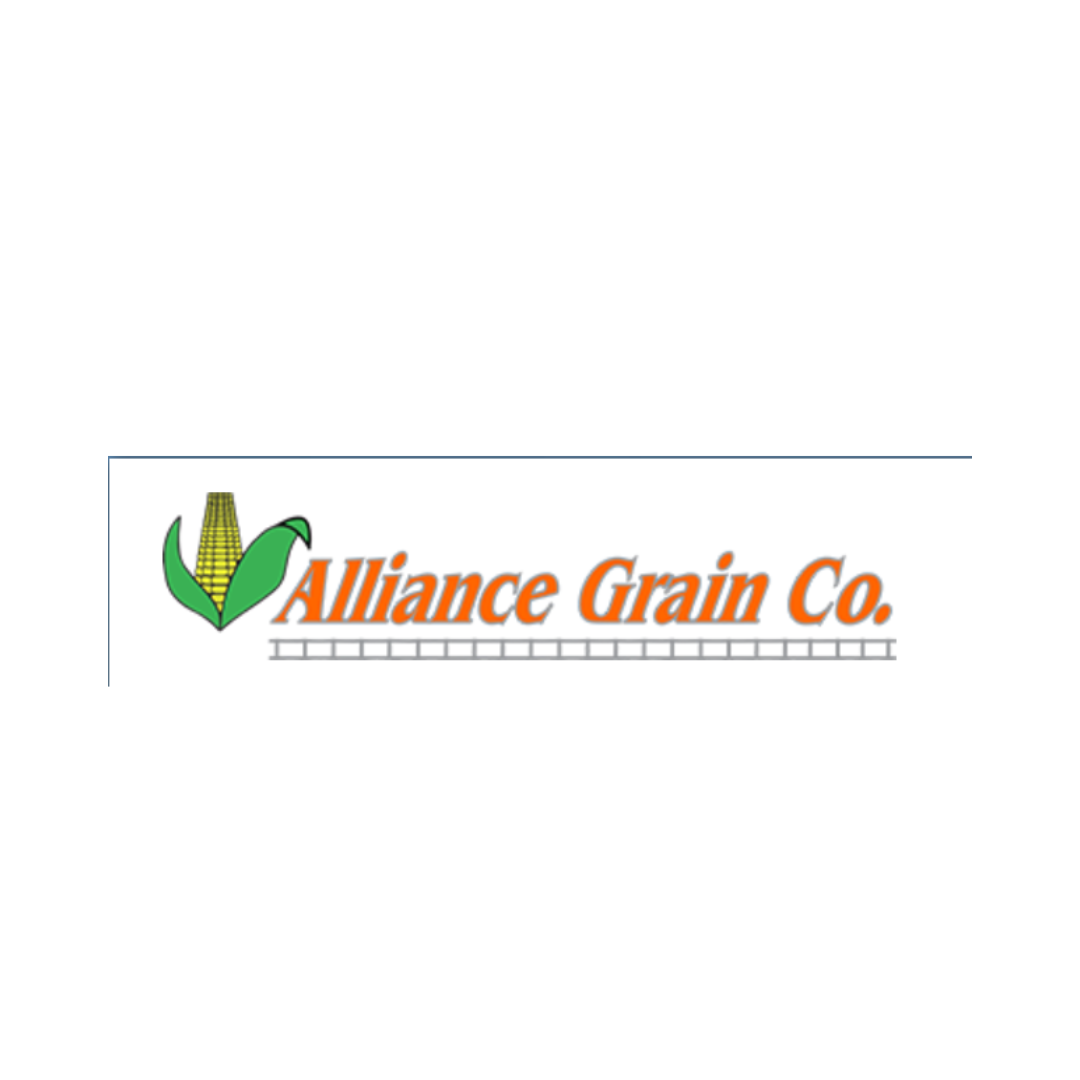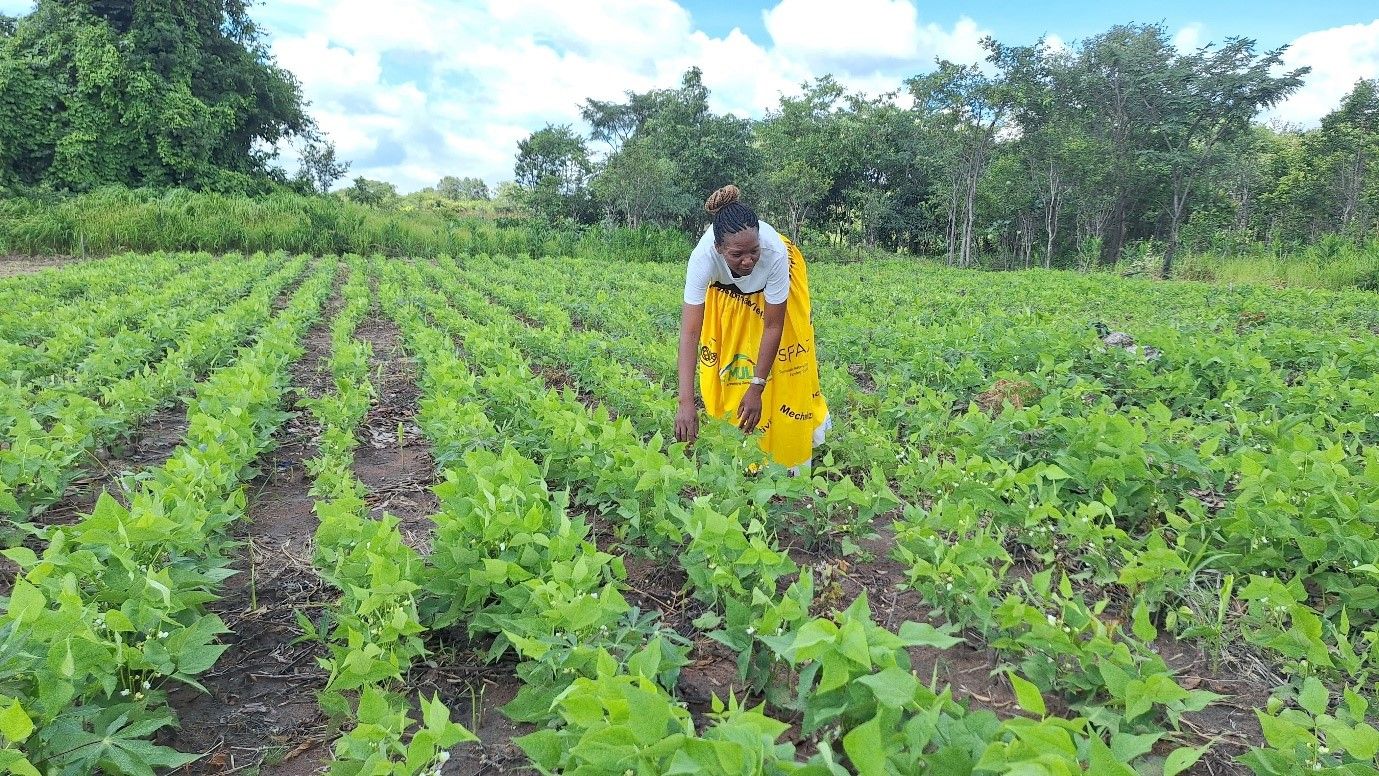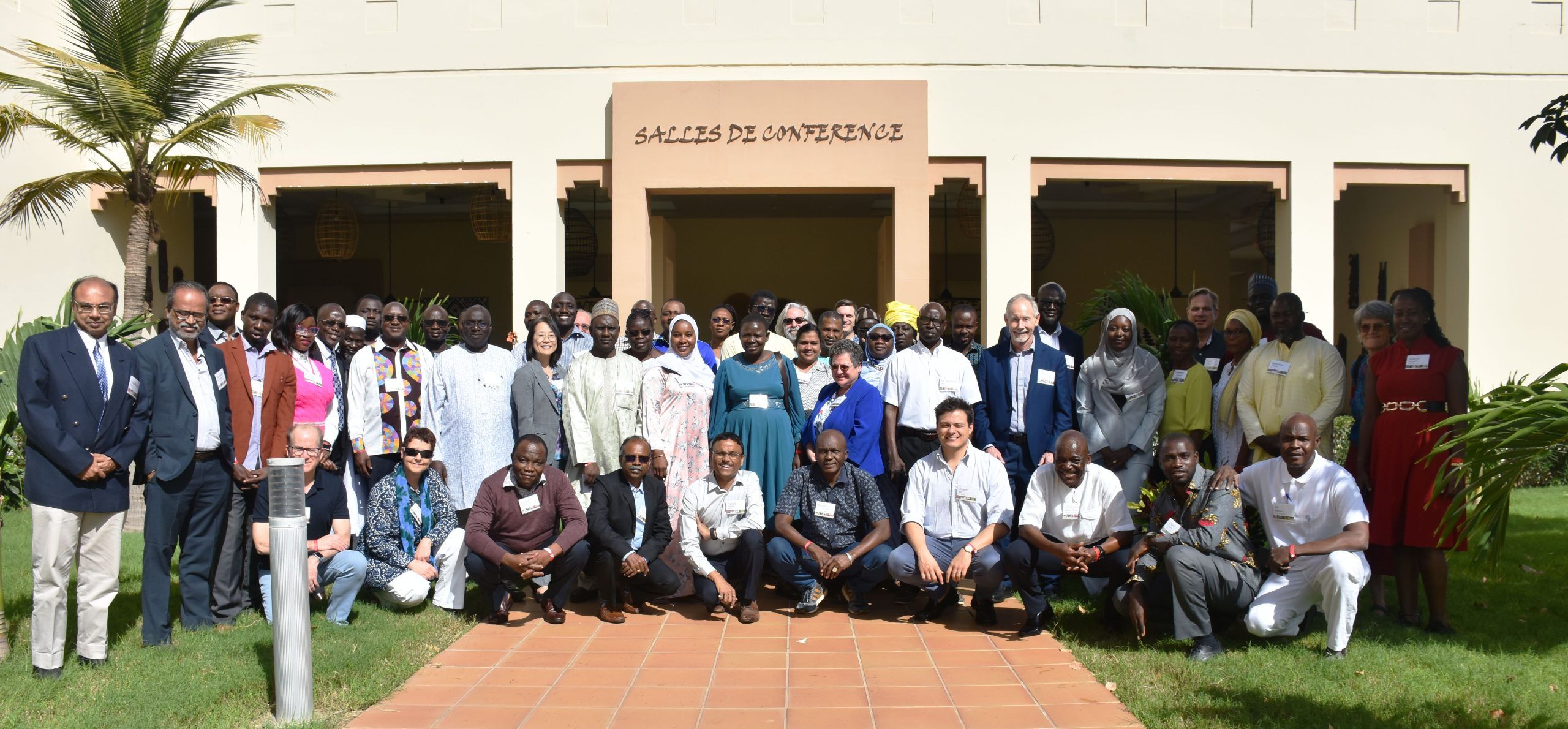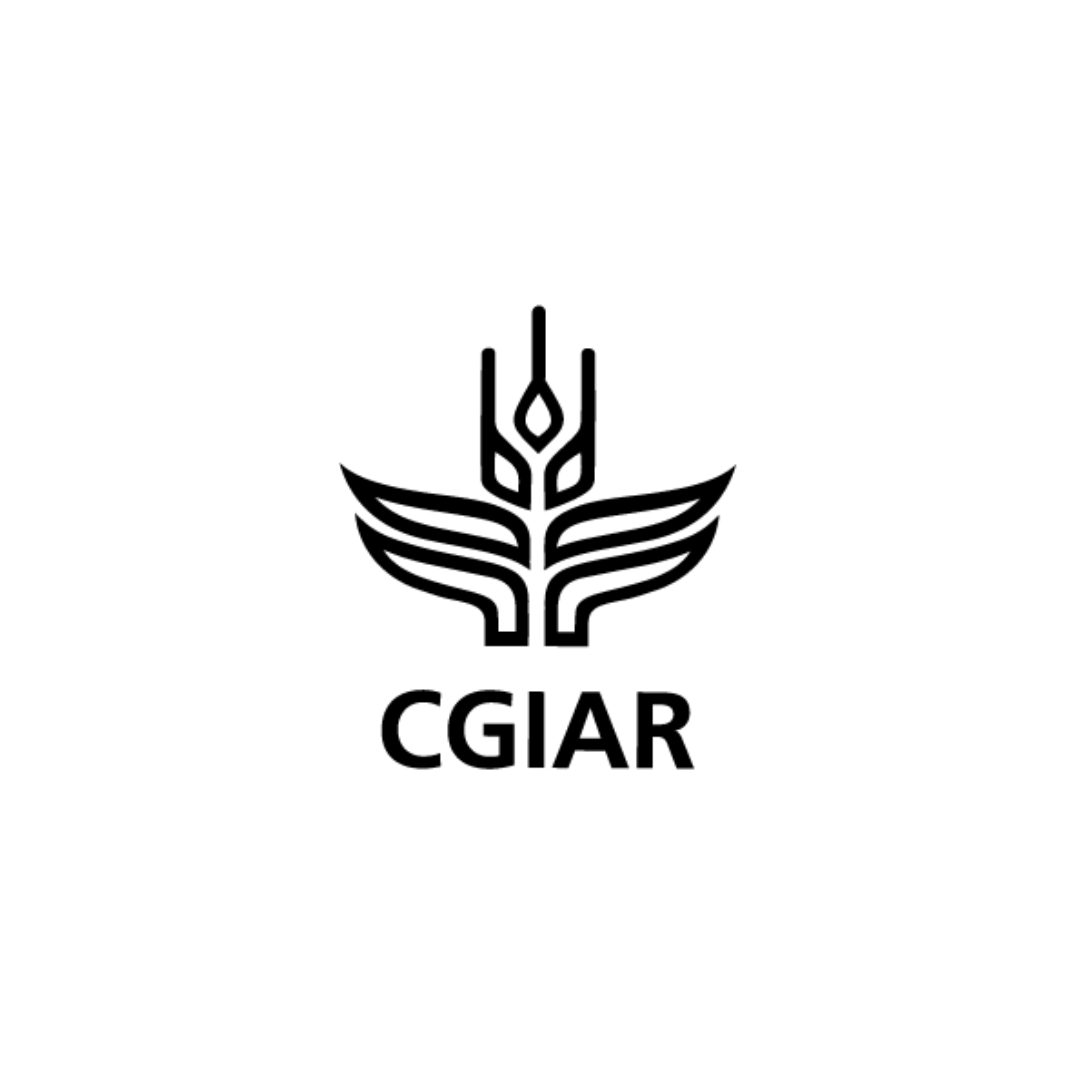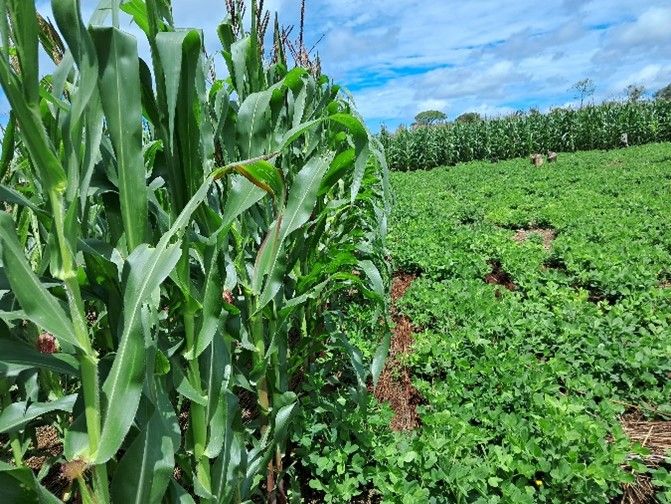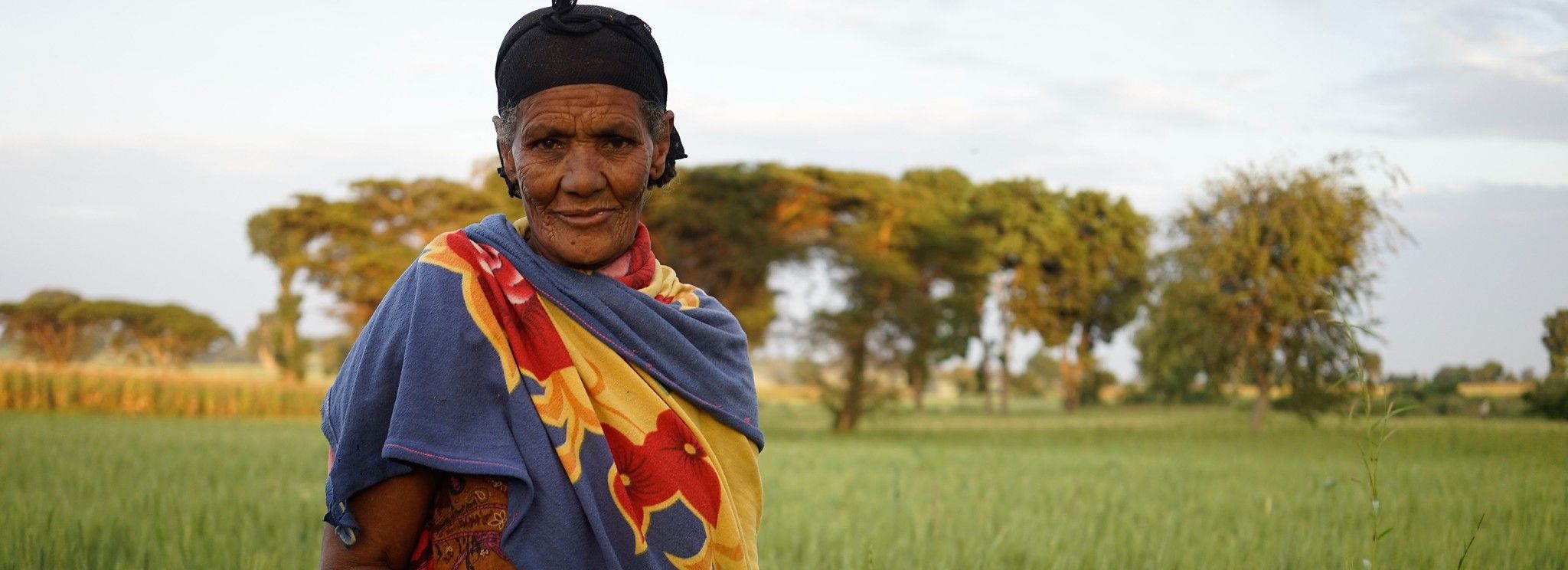Location: Africa
CIMMYT’s work in Africa helps farmers access new maize and wheat systems-based technologies, information and markets, raising incomes and enhancing crop resilience to drought and climate change. CIMMYT sets priorities in consultation with ministries of agriculture, seed companies, farming communities and other stakeholders in the maize and wheat value chains. Our activities in Africa are wide ranging and include: breeding maize for drought tolerance and low-fertility soils, and for resistance to insect pests, foliar diseases and parasitic weeds; sustainably intensifying production in maize- and wheat-based systems; and investigating opportunities to reduce micronutrient and protein malnutrition among women and young children.
Women farmers enhance agricultural production in conflict-torn Sudan

The ongoing conflict in Sudan continues to contribute to a food crisis threatening the lives of over 18 million people. Farmers, especially smallholders and vulnerable women, are facing extraordinary challenges in obtaining needed agricultural inputs, and access to markets is diminishing.
In Kassala State, East Sudan, which hosts hundreds of thousands of people displaced by ongoing armed conflict including Ethiopian and Eritrean refugees, the USAID-funded Sustainable Agrifood Systems Approach for Sudan (SASAS) is working with women farmers to prepare and safeguard the upcoming growing season. This work is critical to help meet the unprecedented demand for vegetables in the region and achieve sustainable development goals.
“At SASAS, we are working to empower women farmers, especially those who lost their traditional livelihood resources, and help them to acquire skills and techniques to increase their agricultural production to help improve food security,” said Abdelrahman Kheir, SASAS chief of party in Sudan.
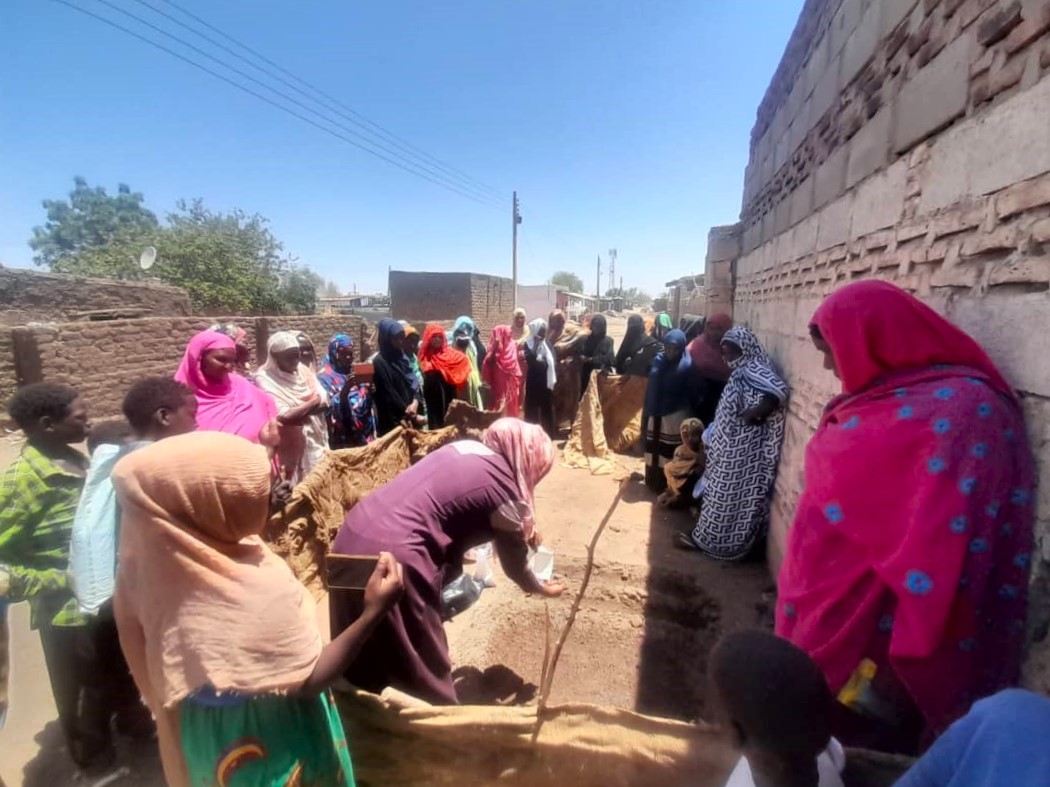
SASAS works with the El-Haram Agricultural Cooperative, a women-led farmers group, based in Kassala, to help increase vegetable production. SASAS trains El-Haram Agricultural Cooperative members on modern agricultural techniques, irrigation techniques, pest control, and organic fertilizers to increase crop yields.
“SASAS trained us on new ploughing and land preparation techniques, which we never used before and then provided us with improved seeds of okra, tomato, chili, and mallow, and encouraged us to use legumes as organic fertilizers,” said Imtithal Atta, a farmer from the Alsawagi neighborhood in Kassala. “In the past, I used to buy vegetable seeds from the local market, but they grow poorly. The improved seeds given by SASAS are germinating extremely well. My income has doubled; I almost made $250 from my first harvest of vegetables.”
The ongoing conflict has interrupted traditional livelihood activities in many regions. In some areas, farmers missed the harvest, leading to a dramatic reduction in agricultural production and debilitating price increases for cereals and vegetables. SASAS is helping to restore agricultural production in key growing regions by ensuring farmers have timely access to necessary production inputs, including fertilizer and climate-adapted seeds.

“For years, I have worked tirelessly on my family’s farm, season after season, without earning a good income, and I was not sure what was wrong. Luckily, this cultivation season, SASAS trained us on new ploughing techniques to better prepare the land for cultivation, using organic fertilizers to enrich the soil and offering us improved vegetable seeds,” said Fatima Ahmed, a woman farmer and a mother of three children from the El-Haram Agricultural Cooperative.
“Thanks to SASAS, both the quality and the quantity of my agricultural products have greatly improved. I am so happy that I got some good money from my vegetables. I feel empowered and now I can have a strong voice within my community. I am more confident and gained the courage to participate in important decision-making processes within my family and express my opinions without fear,” said Ahmed.
A critical part of SASAS are efforts to diversify food production in Kassala, where malnutrition among children under 5 years old, and breastfeeding, lactating, and pregnant women, are prevalent.

“I used to go to the main market in town to get my daily needs from vegetables, but now I buy what I need from women farmers closer to my home. They are selling me fresh vegetables at a good price. The taste of the vegetables is quite fresh and healthy, this is something I have been missing for a long time,” said Hanan, a resident of Alswagi.
“The vegetables produced by members of the El-Haram Agricultural Cooperative has led to an increased supply in the local market. I buy vegetables from women farmers and sell them here in the neighborhood market. This has cut my transportation cost as I used to buy vegetables from markets a long distance away,” said Osman, vegetables trader, also in Alswagi.
A sense of belonging: fostering gender equality and social inclusion in agricultural research
Efforts to improve gender equality and social inclusion are under the spotlight in many workplaces around the world. At CIMMYT, where values of Excellence, Integrity, and Teamwork guide the organization through its 2030 Strategy, commitment to shaping a more inclusive workplace is changing the face of scientific research.
In alignment with the CGIAR Gender, Diversity and Inclusion (GDI) Action Plan for 2023-2024 to achieve gender parity goals, CIMMYT has implemented multiple initiatives to make improvements across its workstreams and geographical locations.
“This is the start of a journey to harness and empower talent from across CIMMYT’s employee base,” said Director General, Bram Govaerts. “Starting with the actions outlined below, CIMMYT aims to become a leader in promoting gender equality and social inclusion in agricultural research and development.”
Empowering women
At CIMMYT, our commitment to gender equality is reflected in our global workforce. During the first half of 2023, women represented one in every three staff members. Across all roles, the current hiring rate for women is 43% in 2023 compared to 21% in 2020, with a particularly positive trend in regional offices, where the percentage has increased from 24% in 2021 to 43% in 2023. Annual improvements are also visible in the number of internationally recruited female staff, as 46% of these roles are filled by women in 2023, compared to 19% in 2022.
In our headquarters in Mexico, there is no major gender gap above 10%, even at the highest level, and 35-40% of employees are women. 50% of the members of the senior leadership team are women, with a significant number of women from diverse backgrounds forming part of our broader management structure. Progress is also visible in our regional offices. In Kenya and Türkiye, 43% and 40% of team members are women respectively, with both countries reaching the CGIAR target of 40/40/20 parity. For the first time, women represented at least 20% of employees in Bangladesh and Nepal in 2023.
However, we recognize there are still areas where CIMMYT must improve gender parity. While the overall gender balance continues to improve, the proportion of women working at CIMMYT globally rests at 32.5%, which is a statistic that can be increased. Gender gaps exceeding 10% can be observed in India and Nepal, where efforts are bridging gaps and forming environments where talent knows no gender.
Advancing equality by region
The impressive diversity of our workforce is one of our greatest strengths, and CIMMYT always seeks new ways to champion its people. As a global organization with presence in 88 countries, benefits are tailored to each region to target the specific needs of employees in each locality.
- The creation of a Gratuity and Provident Trust Fund in Bangladesh, fostering gender equality by providing equal opportunities for financial stability and growth.
- Standardized benefits in India, such as a uniform transport allowance and upgraded housing allowance that ensures fair financial benefits for all employees regardless of job grade.
- Enhanced food coupons and savings funds for employees in Mexico, as well as an after-school program for the children of colleagues working at the headquarters.
- Responding to economic challenges in Pakistan with a 20% general salary increase, a bonus of US $400, and the introduction of a gender-neutral transport allowance.
- An increased allowance for children’s education in Zimbabwe.
In addition, Flexible Work Arrangements (FWA), parental leave, disability access improvements, and translation services showcase CIMMYT’s dedication to equality and inclusion.
Fulfilling careers for all
Investing in our people means ensuring that learning opportunities are equally accessible to all, empowering employees to reach their maximum capabilities. “We actively work to foster a culture and environment where all staff feel confident sharing their perspectives, their contributions are highly valued, and they see a path for growth within the organization,” said Deputy Director of Human Resources, Jean-Flavien Le Besque.
In 2023, 1,189 staff members participated in 431 training courses, with the number of participants increasing by nearly 23% in the same year. Additional e-learning opportunities available in both English and Spanish provide opportunities for professional development in health and safety, communications, personal efficiency, and critical thinking, all which aid staff with the development of valuable skills. These online courses supplement regular training on teamwork, hostile environment awareness, and diversity, equity, and inclusion.
The CIMMYT Academy also plays a significant role in training staff to be future leaders. In 2022, 52 students enrolled into the Academy; 52% of these students are women, underscoring CIMMYT’s commitment to developing everyone’s talent. Staff can also access a Tuition Grant scheme to pursue a higher-level degree.
Next steps
While these initiatives have strengthened gender equality and social inclusion at CIMMYT, further efforts are required to achieve true equity in all corners of the organization. These projects so far are just a glimpse into ongoing work to achieve the CGIAR GDI aims and will be built upon using employee feedback and specialist expertise.
“These successes are just the start of our pledge to ensure CIMMYT is inclusive and safe for all,” said Associate Scientist and Cropping Systems Agronomist, Mazvita Chiduwa. “We want to be an organization that is renowned not just for scientific excellence, but also for the way we champion all groups to reach the best of their ability, thrive in the workplace, and enjoy a positive work-life balance.”
Unanswered questions and unquestioned answers
Over the past few decades, Conservation Agriculture (CA) has moved from theory to practice for many farmers in southern Africa. CA is a system that involves minimum soil disturbance, crop residue retention, and crop diversification among other complimentary agricultural practices. One reason for its increasing popularity is its potential to mitigate threats from climate change while increasing yields.
However, there are limits to the adaptation of CA, especially for smallholder farmers. Challenges are both agronomic (e.g. lack of sufficient crop residues as mulch, weed control, pest and disease carryover through crop residues), socio-economic, and political (both locally and regionally).
A recent paper, Unanswered questions and unquestioned answers: the challenges of crop residue retention and weed control in Conservation Agriculture systems of southern Africa, published in the journal Renewable Agriculture and Food Systems in February 2024, led by CIMMYT and CGIAR scientists examines two specific challenges to more widespread CA adaptation: how to deal with trade-offs in using crop residue and finding alternatives to herbicides for weed control.
For crop residue, the two most prevalent actions are using leftover crop residue for soil cover or feeding it to livestock. Currently, many farmers allow livestock to graze on crop residue in the field, leading to overgrazing and insufficient ground cover. This tradeoff is further challenged by other multiple household uses of residues such as fuel and building material. The most common way to control weeds is the application of herbicides. However, inefficient and injudicious herbicide use poses a threat to human health and the environment, so the research team set out to identify potential alternatives to chemical weed control as the sole practices in CA systems.
“The answer to the question ‘how should farmers control weeds?’ has always been herbicides,” said lead author Christian Thierfelder, CIMMYT principal cropping systems agronomist. “But herbicides have many negative side effects, so we wanted to question that answer and examine other potential weed control methods.”
What to do with crop residue
Previous research from the region found that ungrazed areas had long-term positive effects on soil fertility and crop yields. However, it is common practice for many farmers in Malawi, Zambia, and Zimbabwe to allow open grazing after the harvest in their communities. Livestock are free to graze wherever they wander, which results in overgrazing.
“Open grazing systems help keep costs down but are very inefficient in terms of use of resources. It leads to bare fields with poor soil,” said Thierfelder.

While it is easy to suggest that regulations should be enacted to limit open grazing, it is difficult to implement and enforce such rules in practice. The authors found that enforcement is lacking in smaller villages because community members are often related, which makes punishment difficult, and there is an inherent conflict of interest among those responsible for enforcement.
Controlling weeds
Weeding challenges in CA systems have been addressed worldwide by simply using herbicides. However, chemical weeding is often not affordable and, sometimes, inaccessible to the smallholder farmers and environmentally unfriendly.
Using herbicides, though effective when properly applied, also requires a degree of specialized knowledge, and without basic training, this may be an unviable option as they may pose a risk to the health of the farmers. Thus, alternatives need to be identified to overcome this challenge.
Some alternatives include mechanical methods, involving the use of handheld tools or more sophisticated tools pulled by animals or engines. While this can be effective, there is the possibility of high initial investments, and intercropping (a tenet of CA) forces farmers to maneuver carefully between rows to avoid unintended damage of the intercrop.
Increasing crop competition is another potential weed control system. By increasing plant density, reducing crop row spacing, and integrating other crops through intercropping, the crop competes more successfully with the weeds for resources such as light, moisture, and nutrients. When the crop seed rate is increased, the density of the crops increases, providing more cover to intercept light, and reducing the amount of light reaching the weeds thereby controlling their proliferation.
A holistic approach
“What we learned is that many of the crop residue and weed challenges are part of broader complications that cannot be resolved without understanding the interactions among the current scientific recommendations, private incentives, social norms, institutions, and government policy,” said Thierfelder.
Continuing research into CA should aim to examine the social and institutional innovations needed to mainstream CA as well as strengthen and expand the research on weed control alternatives and focus on the science of communal grazing land management to enhance their productivity.
Sustaining Conservation Agriculture initiatives: lessons from Malawi
Sub-Saharan Africa (SSA) has experienced the worst impacts of climate change on agriculture over the past decades and projections show such effects are going to intensify in the coming years. Diminished agricultural production has been the primary impact channel given the high reliance on rainfed agriculture in the region. Combined with a growing population, food security for millions of people is threatened.
Conservation Agriculture (CA) is a sustainable cropping system that can help reverse soil degradation, augment soil health, increase crop yields, and reduce labor requirements while helping smallholder farmers adapt to climate change. It is built on three core principles of minimum soil disturbance, crop residue retention, and crop diversification.
CA was introduced in southern Africa in the 1990s, but its adoption has been patchy and often associated with commercial farming. A group of researchers, led by Christian Thierfelder, principal cropping systems agronomist at CIMMYT, set out to understand the reasons why smallholder farmers adopt CA, or why they might not or indeed dis-adopt. Their results were published in Renewable Agriculture and Food Systems on March 12, 2024.

“Conservation Agriculture can cushion farmers from the effects of climate change through its capacity to retain more soil water in response to high water infiltration and increased soil organic carbon. It is therefore a viable option to deal with increased heat and drought stress,” said Thierfelder. However, even with these benefits, adoption of CA has not been as widespread in countries like Malawi.
“There are regions within Malawi where CA has been promoted for a long time, also known as sentinel sites,” said Thierfelder. “In such places, adoption is rising, indicating that farmers are realizing the benefits of CA over time. Examining adoption dynamics in sentinel sites can provide valuable lessons on scaling CA and why some regions experience large rates of non- or dis-adoption.”
Thierfelder and his co-authors, Innocent Pangapanga-Phiri of the Center for Agricultural Research and Development (CARD) of the Lilongwe University of Agriculture and Natural Resources (LUANAR), and Hambulo Ngoma, scientist and agricultural economist at CIMMYT, examined the Nkhotakota district in central Malawi, one of the most promising examples of widespread CA adoption.
Total LandCare (TLC), a regional NGO working in Malawi has been consistently promoting CA in tandem with CIMMYT in the Nkhotakota district since 2005.
Results from both individual farmer interviews and focused group discussions revealed that farmers that implement CA saw higher yields per hectare than those who practiced conventional tillage practices. In addition, farmers using CA indicated greater resilience in times of drought, improved soil fertility, and reduced pest infestation.
Why adopt CA?
The primary factors enhancing CA adoption in the Nkhotakota district were the availability of training, extension and advisory services, and demonstration plots by the host farmers. Host farmers are farmers that have been trained by a TLC extension officer and have their own plot of land to demonstrate CA methods. In addition, host farmers train other farmers and share knowledge and skills through farmer field days and other local agricultural exhibitions.
“Social networks among the farmers serve a vital role in CA adoption,” said Ngoma. “Seeing tangible success carries significant weight for non-adopter farmers or temporal dis-adopters which can persuade them to adopt.”

During focus group discussions facilitated by the authors, farmers indicated that demonstration plots also removed fear for the unknown and debunked some myths regarding CA systems, for example, that practitioners show ‘laziness’ if they do not conventionally till their land.
“This suggests that CA uptake could be enhanced with increased, targeted, and long-term promotion efforts that include demonstration plots,” said Ngoma.
Similarly, the longer duration of CA exposure positively influenced farmers’ decisions to adopt CA methods as longer exposure might allow farmers to better understand the benefits of CA practices.
Why not adopt CA?
Farmers reported socioeconomic, financial, and technical constraints to adopt CA. An example is that farmers might not have the labor and time available for weed control, a necessary step in the first few years after the transition to CA.
“Weed control is an important challenge during the early years of CA adoption and can be seen as the ‘Achilles heel’ of CA adoption,” said Thierfelder. CIMMYT scientists therefore focused a lot of research in recent years to find alternative weed control strategies based on integrated weed management (IWM) using chemical, biological, and mechanical control options.

In most cases, the benefits of CA adoption are seen only after 2 to 5 years. Having such a long-term view is not always possible for smallholder farmers, who often must make decisions based on current conditions and have immediate family obligations to meet.
As a contrast to adopters of CA, non-adopters reported a lack of knowledge about CA as a whole and a lack of specific technical knowledge needed to transition from more traditional methods to CA.
This scarcity of technical support is often due to the lack of strong agriculture extension support systems. Since CA adoption can be complex, capacity building of both farmers and extension agents can therefore foster adoption and implementation of CA. This reinforces that farmer-to-farmer approaches through host farmers could complement other sources of extension to foster adoption.
Next steps
The authors identified three policy recommendations to accelerate CA adoption. First, there is a need to continue promoting CA using farmer-centric approaches more consistently, e.g., the host farmer approach. Using a farmer-centered approach facilitates experiential learning and can serve as a motivation for peer-to-peer exchange and learning and can reduce misinformation. The host farmer approach can be augmented by mega-demonstrations to showcase CA implementation at scale. In addition, rapid and mass extension delivery can be enhanced by using digital technologies.
Second, CA promotion should allow farmers the time to experiment with different CA options before adoption. What remains unclear at the policy level is the types of incentives and support that can be given to farmers to encourage experimentation without creating economic dependence. NGOs and extension workers could help farmers deal with the weed pressure soon after converting from full to minimum tillage by providing herbicides and training.
Third, there is a need to build and strengthen farmer groups to facilitate easier access to training, to serve as conduits for incentive schemes such as payments for environmental services, and conditional input subsidies for CA farmers. Such market-smart incentives are key to induce initial adoption in the short term and to facilitate sustained adoption.
Collaboration across the seed system value chain
Collaboration among diverse seed value chain actors is essential to improving seed systems for dryland crops in Kenya and contributing to food security in an era marked by climate change. This holistic approach is essential at a time when sustainable agricultural practices are increasingly becoming pertinent in semi-arid and high-potential areas, as emphasized by participants attending a multi-stakeholder seed systems meeting in Nairobi.
The Kenya Drylands Crop Seed Systems Workshop in February 2024 brought together various stakeholders from the agricultural sector, including farmers, policymakers, researchers, and the private sector. The main aim of this meeting was to identify practical ways to address critical challenges in the seed system for key dryland crops—pigeon pea, chickpea, groundnut, millets, and sorghum—essential to the livelihoods of millions in Kenya. Organized by CIMMYT and the Kenya Agricultural and Livestock Research Organization (KALRO), this collaborative effort aimed to gather insights and jointly develop a seed systems strategy to strengthen a seed supply system that matches grain demand for these essential grains.
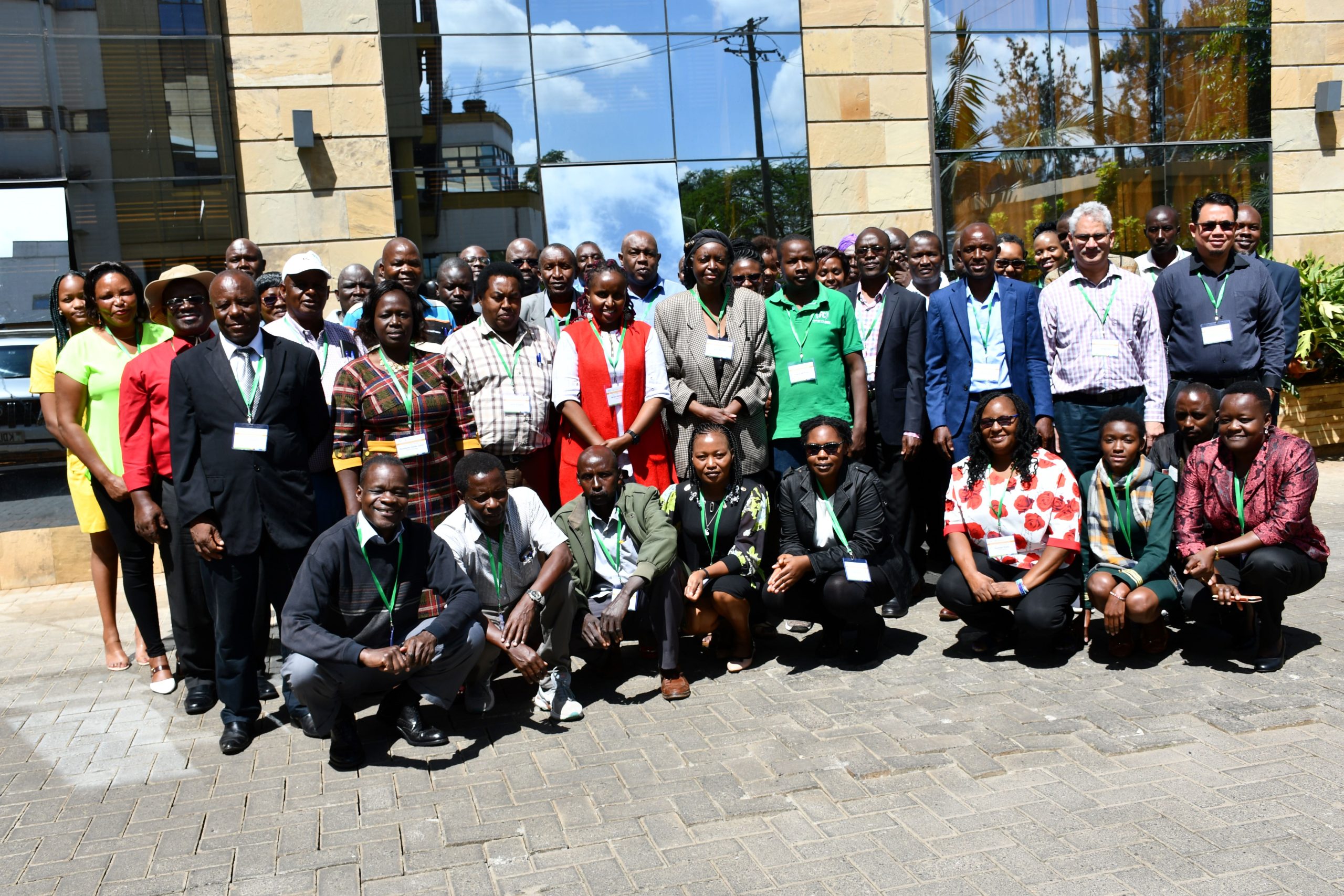
While moderating the discussion, Patrick Ketiem, director of agricultural mechanization research at KALRO, highlighted the importance of the situation. “The demand for drought-tolerant dryland crops and varieties is a clarion call for breeders to innovate further,” he explained. This reflects a broader trend across the country, where even high-potential areas are shifting to dryland crops in response to unpredictable weather patterns.
Addressing farmer needs
The workshop allowed participants to delve into the intricacies of seed systems, from varietal preferences to market readiness, highlighting the importance of collaboration among breeders, distributors, and farmers. Moses Siambi, CIMMYT’s regional director for Africa, emphasized the importance of integrating passion with science to make a tangible difference in the lives of farmers. “Our work is not just about developing varieties,” Siambi remarked. “It’s about improving livelihoods and ensuring that the benefits of our research reach the smallholder farmer,” he explained, emphasizing the broader impact of CIMMYT’s efforts to boost agricultural productivity, food security, and livelihoods in the face of climate change.
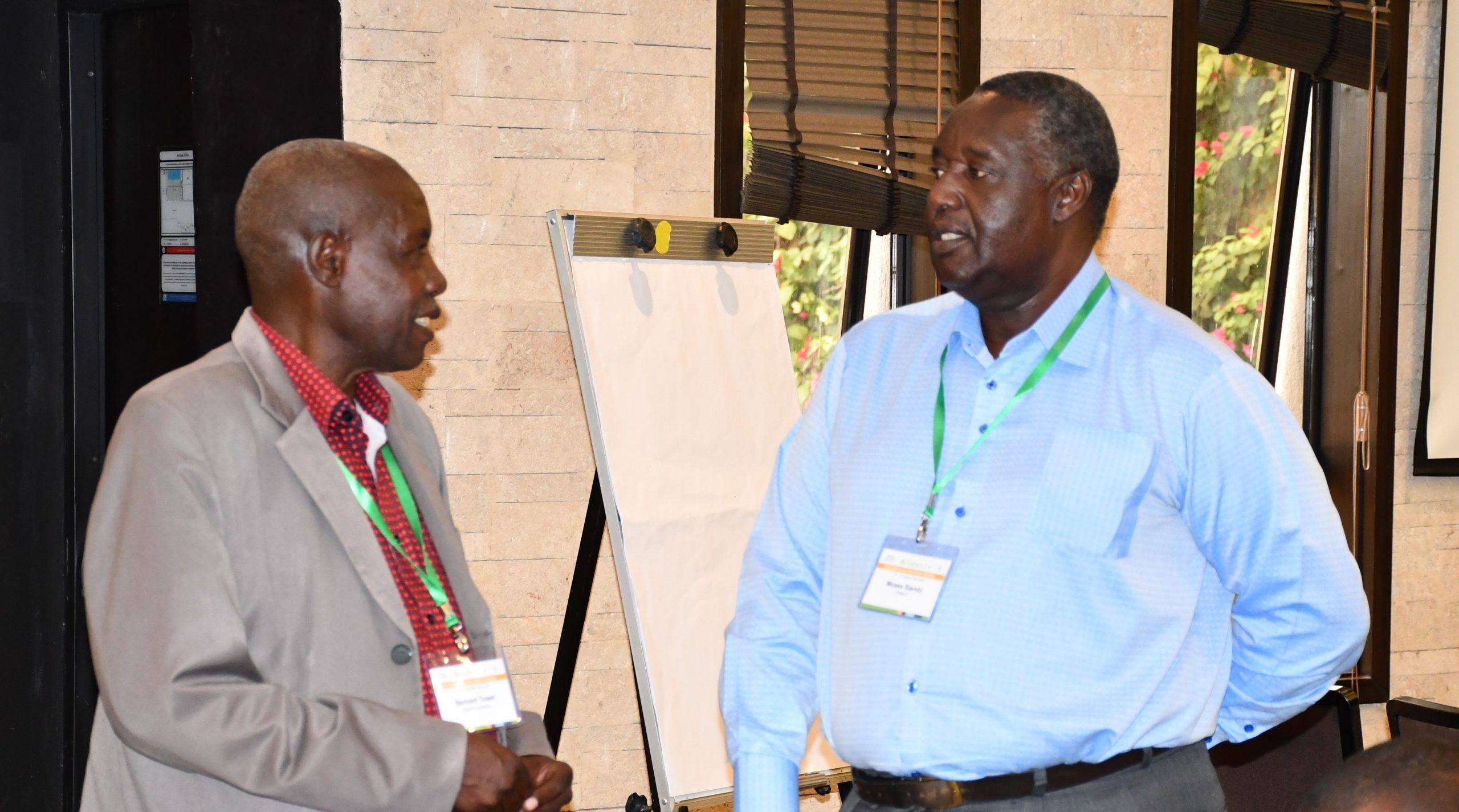
Chris Ojiewo, partnerships and seed systems lead at CIMMYT, explained the vision for the Dryland Crops program, referencing the journey of the Accelerated Varietal Improvement and Seed Delivery of Legumes and Cereals in Africa (AVISA) project, which was a culmination of a decade of research aimed at introducing new, diverse, and farmer-preferred crop varieties to farming communities through a variety of seed delivery models.
“The essence of our endeavor is to ensure that the genetic gains from our breeding efforts result in real benefits for the farmers,” he said. “Developing seed varieties with the end-user in mind is crucial to ensure that crops not only reach the farmers but also meet their specific needs effectively.”
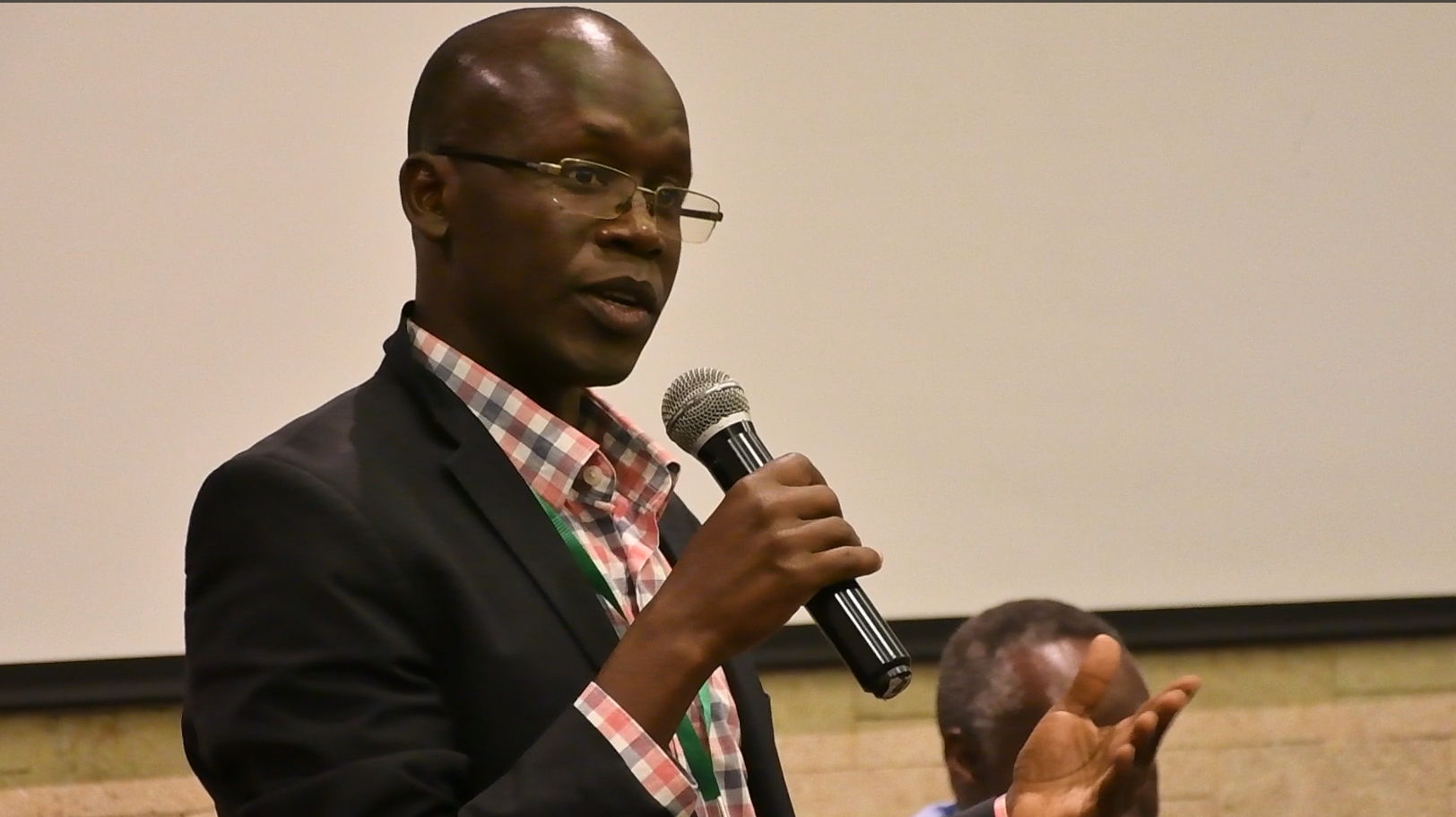
Improving seed systems
The workshop discussions also highlighted the importance of innovation in seed delivery models and the need for increased investment in the dryland crops sector as essential strategies for addressing current challenges and capitalizing on new opportunities. Investment decisions will be guided by granular data on local grain demand, enhancing seed production planning. Additionally, insights from institutions such as the Agriculture and Food Authority (AFA) and the State Department of Agriculture, consolidating per capita consumption data, will aid in determining the requisite seed supply per capita. Moreover, there is need for a mechanism for facilitating knowledge through consolidating data from existing projects that tackle comparable challenges related to food security and seed accessibility.
Lusike Wasilwa, crops systems director at KALRO, who represented the organization’s director general at the event, stressed the importance of seeds in agriculture. “From genes to gains, our focus is on developing climate-smart, nutritious crops that not only enhance soil health but also ensure food security in Kenya,” Wasilwa said. She further highlighted the importance of soil health and market development in achieving sustainable food production in arid and semi-arid lands, promoting biodiversity, and sustainable land management practices.

Cross-cutting issues
The workshop also addressed regulatory and control measures in seed production with Stellamaris Mulika, principal seed inspector from the Kenya Plant Health Inspectorate Service (KEPHIS), highlighting the importance of stringent quality control measures to ensure the dissemination of quality seed of superior crop varieties.
The importance of gender inclusivity and youth engagement in agriculture was also acknowledged, reflecting women and youth’s critical role in legume and cereal variety selection, diversifying seed sources, and meaningfully contributing to the seed value chain. Veneza Kendi, a student at Jomo Kenyatta University of Agriculture and Technology (JKUAT), proposed several interventions to increase investment capacity for farmers and aggregators, mainly from the assurance of high yields from certified seeds to farmers, serving as a motivation.
Gloria Mutheu, a seed merchant at Dryland Seed Company, highlighted the need for government support in investing in the grain sector, citing the school feeding program as an initiative to pull seed demand. Mutheu urged the government to expand the crop types in legumes and cereals, such as chickpeas, included in these school feeding programs to increase demand. This, she argued, would gradually establish an inclusive seed system for increasing uptake of these underutilized but opportunity nutrient-dense crops.
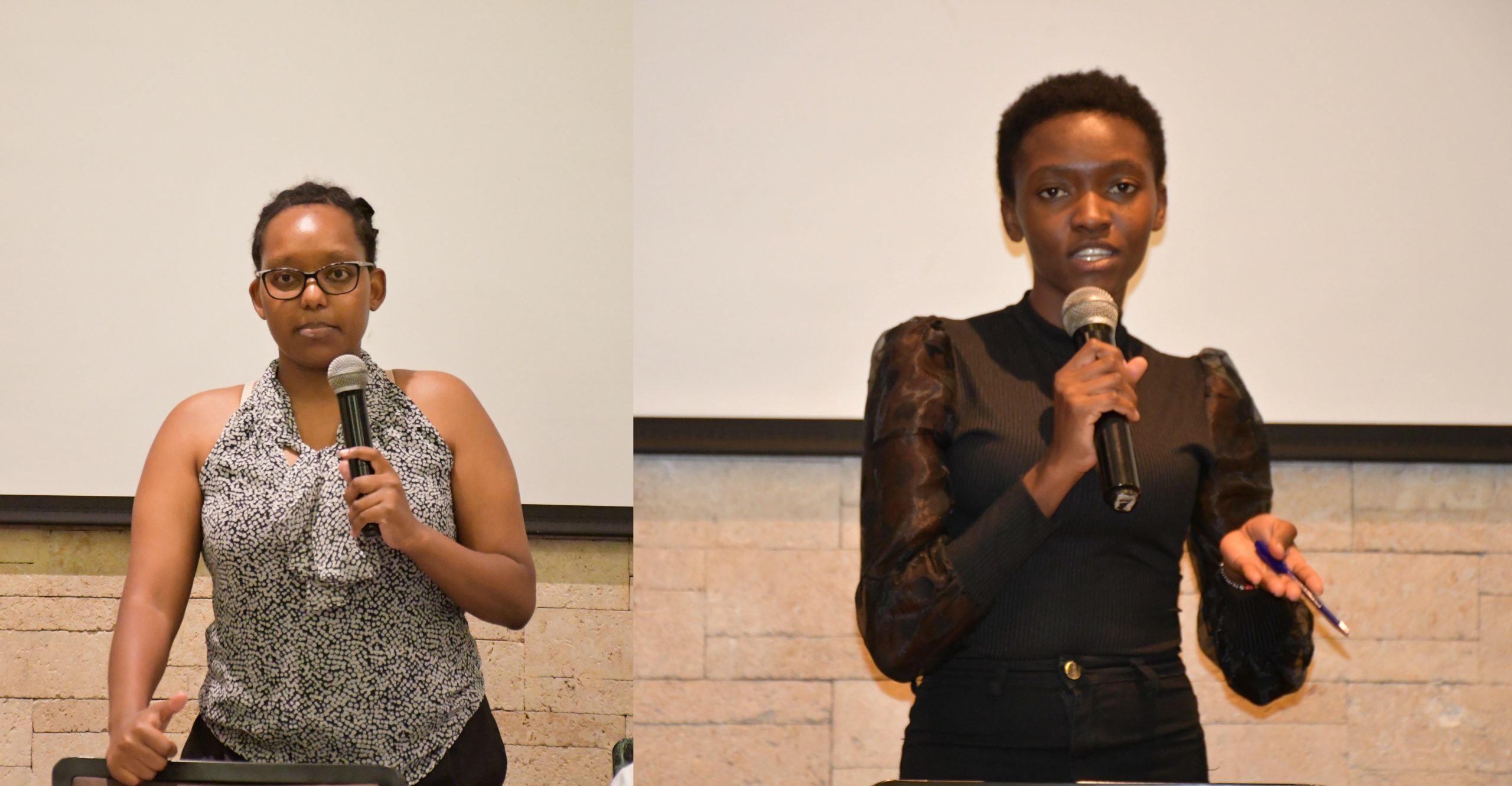
The consensus was clear: to enhance the seed systems for dryland crops, there must be collaboration across the entire value chain—from breeders to farmers, from policymakers to the private sector. This integrated approach is critical for Kenya’s climate change adaptation, food security, and promotion of sustainable agricultural practices.
Spearheaded by CIMMYT with financial support from the Bill and Melinda Gates Foundation and the United States Agency for International Development (USAID), the AVISA project seeks to improve breeding and seed systems of dryland crops, as well as the livelihoods of small-scale producers and consumers in sub-Saharan Africa. CIMMYT is leveraging this opportunity to advance research and expand its influence through its 2030 strategy that shapes the future of agriculture as a driver of food and nutrition security, and climate resilient, sustainable, and inclusive agricultural development.
Nevada Researcher Aims to Improve Sorghum Hybrids for Dairy Cattle Feed
Melinda Yerka, a researcher from the University of Nevada, Reno, is collaborating with CIMMYT, focusing on enhancing sorghum hybrids for better dairy feed, utilizing her breakthroughs in sorghum breeding alongside CIMMYT’s agricultural expertise. Their joint efforts aim to develop sorghum varieties with higher protein and starch content, suitable for diverse climates, particularly in Africa. This partnership underscores a strategic approach to global food security, leveraging sorghum’s adaptability to support sustainable agriculture and climate resilience.
Read the full story.
Sow, grow, and thrive: a pathway to improve cassava farming in Zambia
For decades, women farmers like Maureen Bwalya from the Musa camp in Kasama district of northern Zambia, have upheld the tradition of cultivating cassava on ridges. These small piles of soil created by hand hoes, 30-50 cm tall and 50 cm wide are intended to reduce water logging and facilitate cassava growth. But forming row after row takes a significant amount of physical labor. Establishing ridges follows a traditional practice known as chitemene, a Bemba word which means “place where branches have been cut for a garden.”
Chitemene, a slash and burn technique once common in Zambia, involves cutting down standing trees in the Miombo woodlands, stacking the logs, and then burning them to create a thick layer of ash believed to enhance soil fertility. The ashen fields are initially cultivated with pearl millet and followed by crops like cassava. As years progressed, this method has been associated with adverse environmental impacts disrupting the ecosystem balance due to increasingly shortened fallow and recovery periods. However, with the ever-changing climate, Bwalya and other farmers recognize the need for sustainable practices that require less labor.
Alternatives to the traditional methods
Since childhood, Maureen Bwalya, a mother of seven from Musa Camp in the Kasama District of northern Zambia, has dedicated her life to cassava farming. Thriving under very low fertility and acidic soils, cassava has offered a lifeline amid the challenges of rural agriculture. When the Sustainable Intensification of Smallholder Farming Systems in Zambia (SIFAZ) project was introduced in the northern province, where cassava is a strategic crop, Bwalya saw a valuable opportunity for change to cultivate better practices that not only improve cassava yields but also replenish soil fertility in her fields.
“When I started these trials, it was a tough transition,” said Bwalya, reflecting on her journey. “Shifting from ridge planting to flat land cultivation posed its challenges as this practice was new to me. But with time, I have learned the advantages of intercropping: increased yields, less labor, and enhanced productivity, all of which enrich my farming practices.”
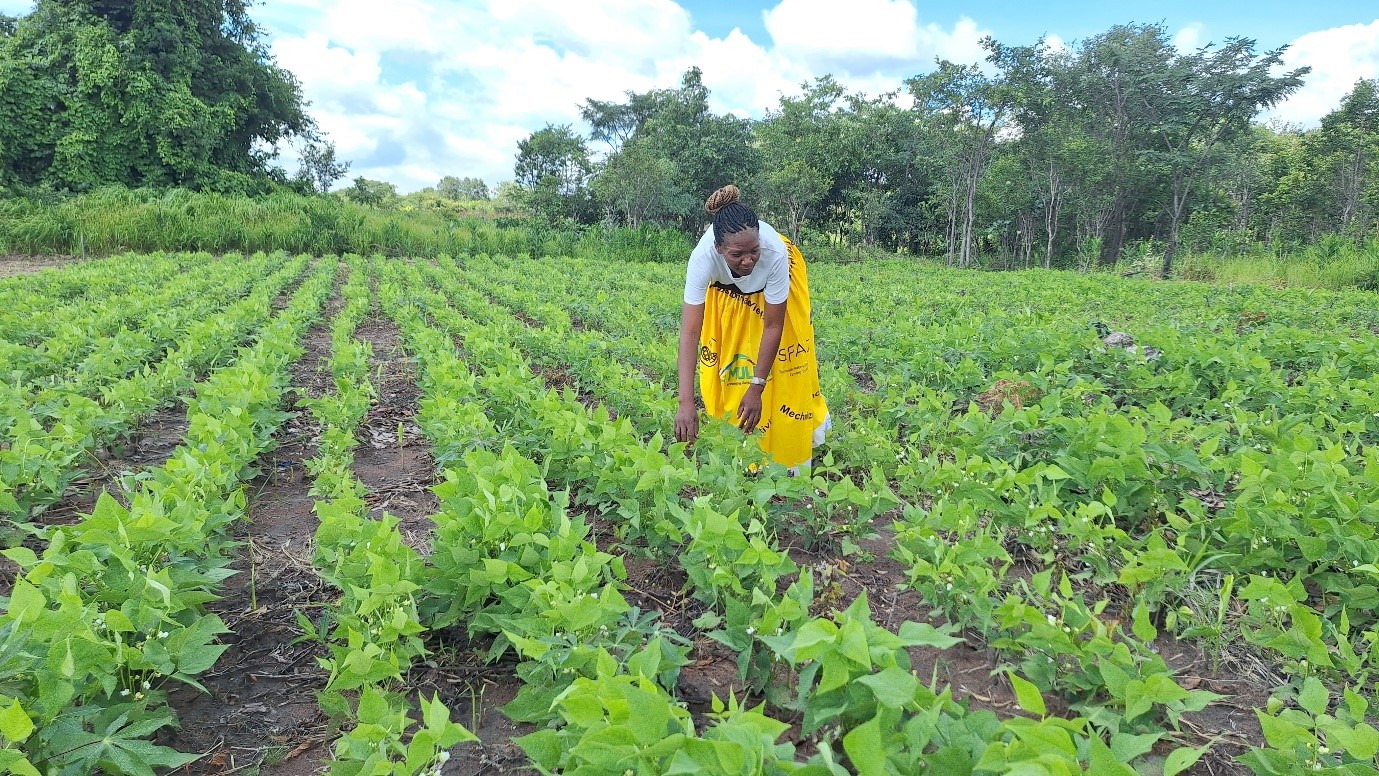
Implemented over the last five years by CIMMYT, in collaboration with FAO and the Ministry of Agriculture, SIFAZ aims to advance the intensification of farming practices and catalyze widespread adoption among farmers in Zambia. In the Musa camp, key partners took on the challenge of advancing better farming techniques with cassava. Their collective objective was clear: to identify methods that minimized labor intensity while maximizing yields. Through rigorous trials, including comparing flat land planting against traditional ridge systems and experimenting with intercropping cassava with common beans and groundnuts, promising results have been seen.
The outcomes yielded thus far have been nothing short of inspiring across farmers. It has become clear to farmers and researchers that cassava planted on flat land, particularly within a Conservation Agriculture (CA) framework, was not only feasible in high rainfall areas but also yielded significantly higher returns. Despite observing fewer root structures, the roots themselves proved to be robust and weighty, ultimately translating to increased productivity for smallholder farmers. Furthermore, farmers have confirmed that cassava from the CA plots tastes better than the one from the ridged portions.
“As a cassava trial implementer,” Bwalya said, “I undertook various trials exploring intercropping cassava with beans and groundnuts, across both flat and ridge systems.”
Thriving and innovating
Her six-hectare plot has become a hub of experimentation, with 0.3 hectares dedicated to the ongoing trials. Encouraged by the successes and promising yields witnessed on flat land, Maureen extended these sustainable practices to the remaining expanse, intercropping maize with cassava. Her results have been noticed, drawing the interest of over fifty neighboring farmers, inspired by her flourishing plot.
As the harvesting season approaches, Bwalya faces no shortage of opportunities to market her produce. From cassava cuttings to nutrient-rich leaves and tubers, she never runs short of eager buyers in local markets, ensuring a steady income for her family.
Navigating through the different trials across the Kasama district, pockets of adoption in some farmers’ fields are noticeable. Through collaborative partnerships and community engagement, SIFAZ strives to empower farmers with the knowledge and tools stemming from the trials to become more food secure in the face of evolving climatic challenges.
New technologies to mitigate impact of drought
CIMMYT is combating the effects of El Niño and climate change by fostering climate-smart agriculture, including drought-tolerant crops and conservation practices, to bolster smallholder farmer resilience and productivity. Through partnerships and sustainable farming innovations, CIMMYT aims to improve food security and adapt to environmental challenges, ensuring that advanced technologies benefit those most in need.
Read the full story.
Revolutionizing food security: Africa’s millet renaissance
In a landmark initiative to bolster sustainable agriculture and food security, the consultative workshop ‘Bottlenecks to Expansion of Pearl and Finger Millets in Africa’ marked a pivotal step towards revitalizing millet cultivation across the continent. Spearheaded by the Bill & Melinda Gates Foundation, in collaboration with CIMMYT and the Senegalese Institute of Agricultural Research (ISRA), a meeting held in Senegal united global experts to unlock the untapped potential of millets as a cornerstone of sustainable agriculture and food security in Africa.
The discussions included identifying the symptoms of the problem, underlying issues causing these symptoms, and the interventions needed to be implemented to address these issues. This collaborative efforts among national and international organizations including government bodies, research institutes, and NGOs, demonstrated the goal of revitalizing millet cultivation through partnerships.
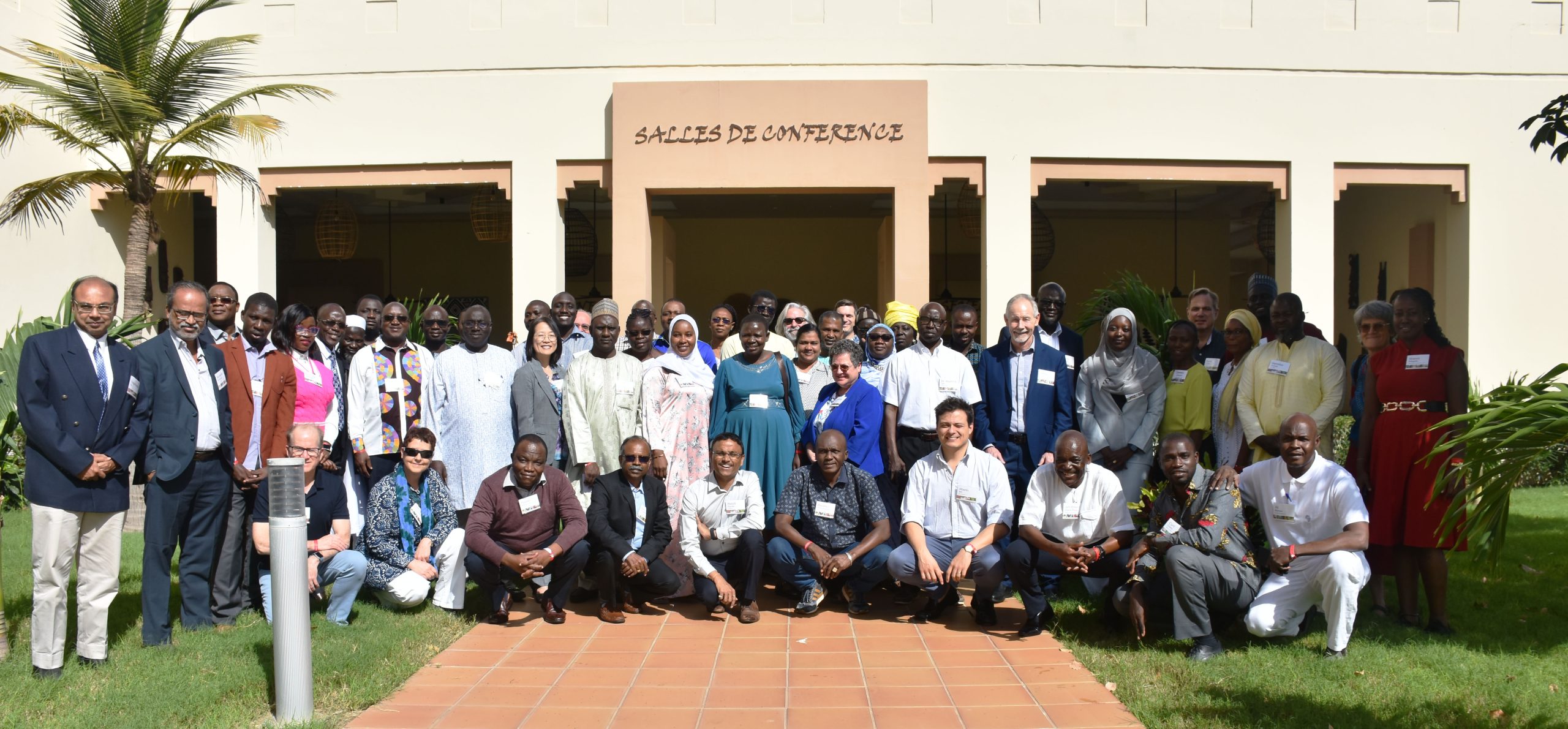
The United Nations General Assembly declared 2023 the International Year of Millets to raise awareness of and direct policy attention to millets’ nutritional and health benefits and their suitability for cultivation under adverse and changing climatic conditions.
Long overlooked but brimming with potential, millets offer a sustainable solution for both farmers and consumers in terms of profitability, adaptability, and sustainability in farming, as well as healthier dietary options for consumers.
Lessons learned from India
India, a key player in millet production, provided valuable insights into millet cultivation and consumption, providing a potential model for Africa to emulate in its millet-related strategies.
To understand the growth of millets in India, the Indian Ambassador to Senegal, Naba Kumar Pal, highlighted the strategies used by the Indian government to raise awareness about millets as a nutritious cereal that contributes to food security and provides a nutritious dietary option aimed at eliminating hunger and improving nutrition in his opening remarks.
“The first step the government did was to rebrand millets from ‘coarse grains’ to ‘nutri-cereals’, a move that has significantly increased domestic consumption and market interest of millets in India,” said the ambassador.
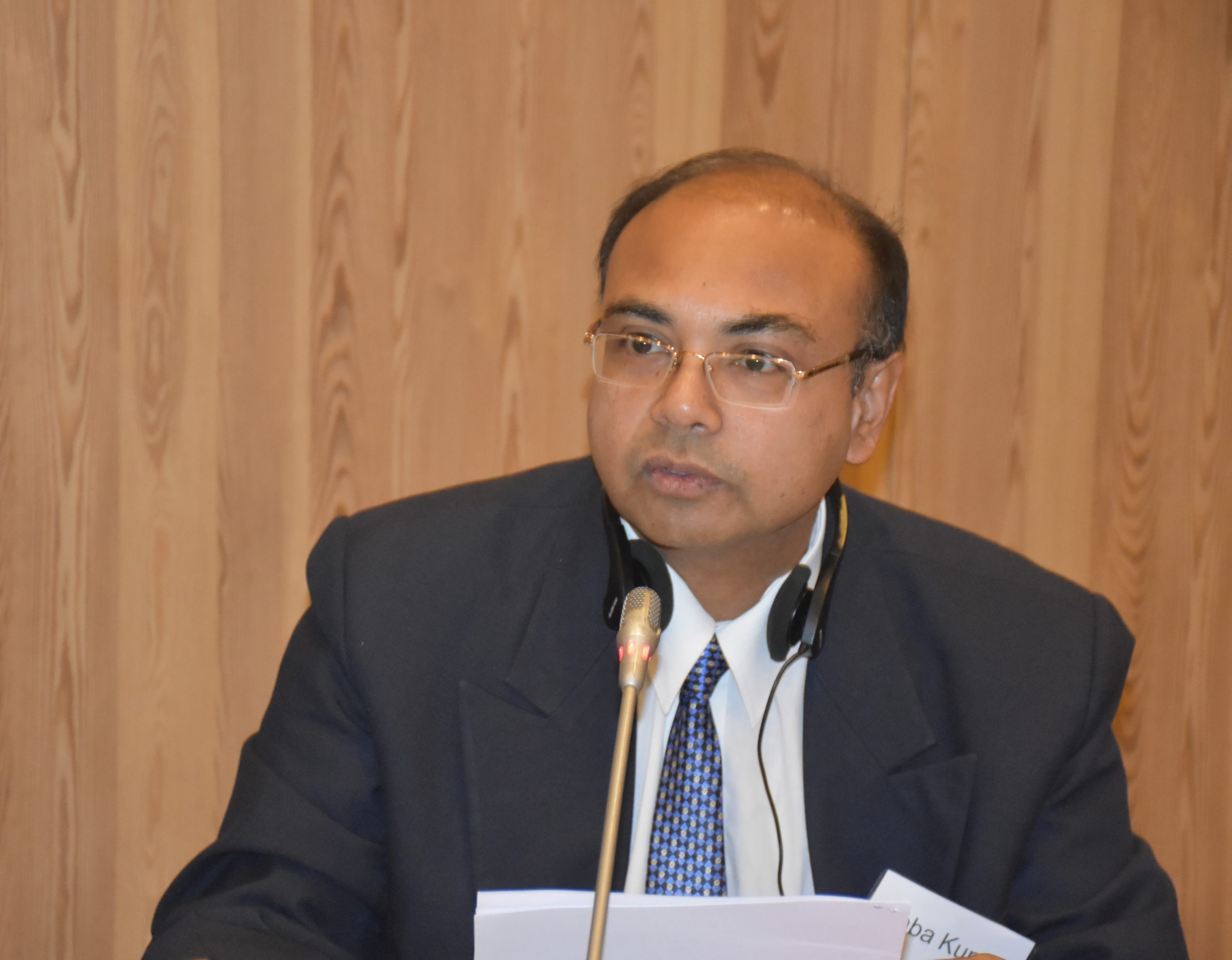
In Africa, millets are under appreciated and not utilized as crops. They are often labeled as a ‘poor man’s crop,’ ‘neglected crop,’ or ‘orphan crop’. The negative connotations have, among other areas, influenced consumers’ perceptions. By changing the vocabulary from demeaning to empowering, millets’ image can be transformed from an overlooked option to a crop of choice in Africa.
The workshop also delved into policy advocacy and commercialization efforts in India, and how these strategies could be replicated in African contexts. Tara Satyavati and Dayakar Rao, representing Indian institutions, shared insights on millet production, nutritional evaluation, and the development of value-added products. The importance of policy intervention, such as increasing the Minimum Support Price (MSP) for millets and including them in public meal programs in India, was discussed. These measures not only provided financial incentives to farmers but also increased accessibility and consumption among the general population.
The two asserted that “millets offer a sustainable solution for both farmers and consumers in terms of profitability, adaptability, and sustainability in farming, as well as healthier dietary options for consumers.”
Millets are adaptable to diverse climates, have low water requirements, and provide nutritional benefits. African countries, which face similar issues in terms of climate change and food security, can use millets as a crop to promote environmental sustainability and economic viability.
National and international collaborations
A panel discussion shed light on national and international initiatives that highlighted collaborative efforts in crop improvement and millet innovations. On the national level, Hamidou Diallo from the Ministry of Agriculture, Rural Equipment, and Food Sovereignty of Senegal (MAERSA) outlined a multi-pronged approach for Senegal. These approaches included increasing millet production, providing high-quality seeds, equipping local producers with essential tools and equipment, providing fertilizers to farmers, and expanding the overall cultivated areas of millet. These efforts represent a focused approach to leveraging agricultural innovation in millets to improve livelihoods and income for small-scale farmers.
“Aligning with the needs of the local community ensures the initiatives are impactful and resonate with the agricultural landscape and community needs,” he emphasized.
Insights into the international initiatives included discussions on innovative initiatives in the Dryland Crop Program (DCP), presented by Dryland Crops Program Director and Wheat Program Director Kevin Pixley, included the establishment of the African Dryland Crops Improvement Network, gene editing, a legumes mining project and the Vision for Adapted Crops and Soils (VACS) project, that will include millets as a prioritized crop.
“We need to find innovative ways to reach more farmers with options to improve their livelihood and popularize millets across different market segments,” said Pixley.
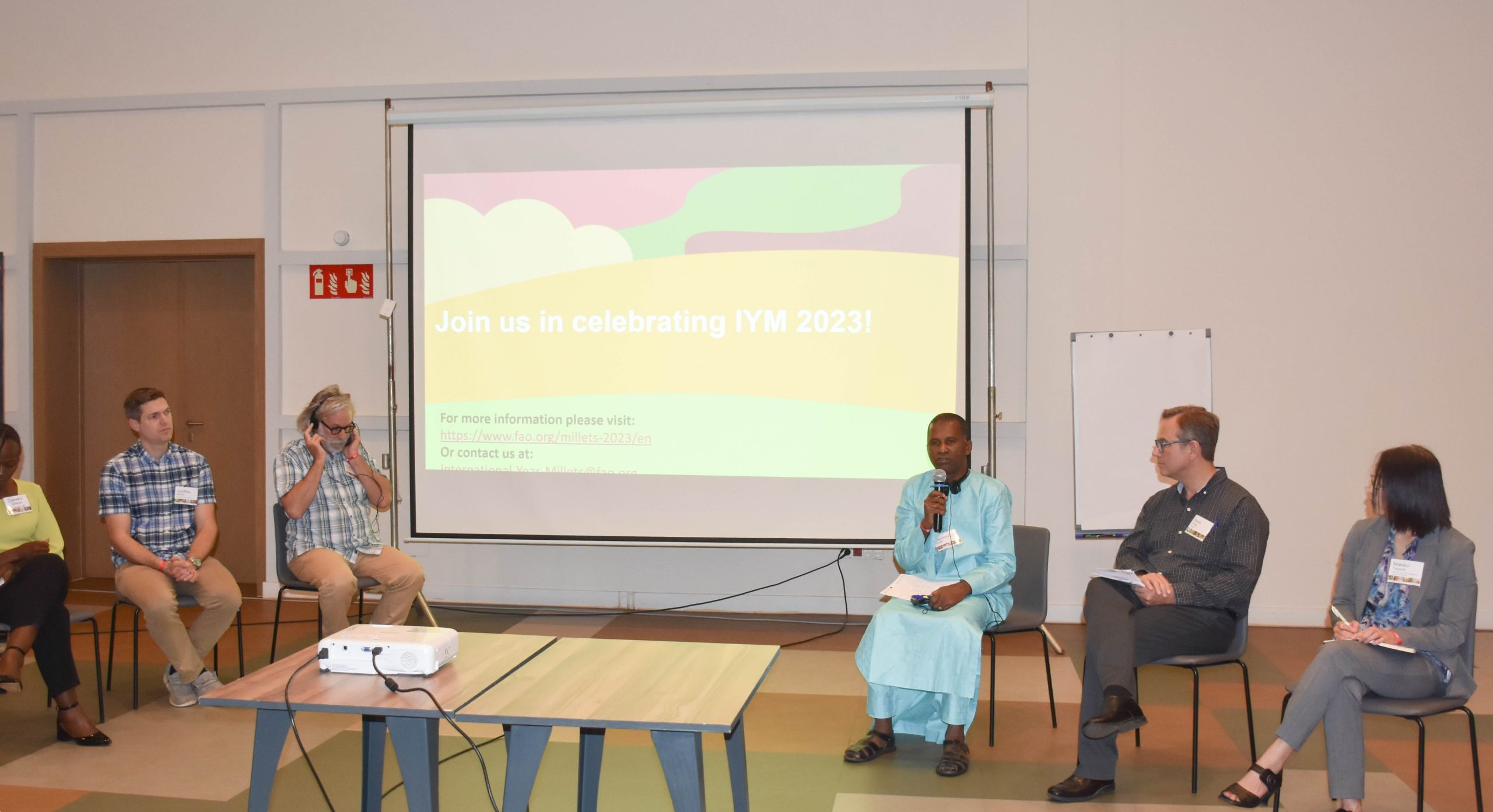
Other topics covered included insights from the United States Agency for International Development (USAID) innovation lab on sorghum and millets, emphasizing the importance of African-led projects and addressing the knowledge gap between African and U.S. researchers.
The pioneering role of the International Crops Research Institute for the Semi-Arid Tropics (ICRISAT), particularly in agri-business incubation, was noted, along with the Feed the Future Innovation Lab for Crop Improvement, managed by USAID and Cornell University efforts in fostering regional collaborations.
Makiko Taguchi of the Food and Agriculture Organization of the United Nations (FAO) emphasized the importance of global engagement in promoting millets as a sustainable and nutritious food source for global food security and agricultural development and highlighted the various initiatives and projects born of the International Year of Millets. Douglas Gayeton, co-founder of The Lexicon emphasized the role of effective messaging in changing people’s perceptions of millets. He underscored the importance of shifting away from terms like ‘neglected’ and ‘orphaned’ crops to more positive empowering language that resonates with consumers and policy makers.
CIMMYT’s role in dryland crop innovation
Recognizing the ever-evolving needs of society at large, CIMMYT began an initiative to advance research and broaden its impact by implementing the Dryland Crops Program. This approach is based on CIMMYT’s 2030 strategy, which will shape agriculture’s future as a driver of climate resilience, sustainable, and inclusive agricultural development, and food and nutrition security, all while meeting the United Nations Sustainable Development Goals and Africa 2063 by promoting food security, improving nutrition, and mitigating the effects of climate change.
The meeting underscored the immense potential of millets in Africa to contribute to a resilient and nutritious future, reinforcing the need for continued collaboration, innovation, and investment in this vital crop. With the right mix of policy support, technological innovation and market development, millets could be the key to Africa’s resilient and sustainable agricultural future. The workshop concluded with a call to action for stakeholders to collaborate and implement innovative practices to enhance the growth of the millet sector in Africa.
How maize seed companies use market intelligence
In a pioneering effort led by CIMMYT, the “Hybrid Maize Seed Marketing in Kenya” workshop has become a catalyst for innovation within Kenya’s maize seed industry. This landmark event brought together representatives from seed companies, agro-dealers, and other key stakeholders, fostering collaborations that have since ignited transformative changes. From revitalizing marketing strategies to introducing early maturity maize varieties, the workshop’s outcomes are shaping a more responsive and sustainable seed market. CIMMYT’s role in facilitating these industry advancements underscores its commitment to agricultural development and farmer support, setting the stage for continued progress in Kenya’s maize sector.
Read the full story.
A tale of two worlds: contrasting realities in southern and northern Zambia during El Niño
From the densely lush landscape of Zambia’s northern province to the arid terrain of the south, a stark reality unfolds, intensified by El Niño. Zambia’s agriculture faces contrasting realities yet potential lies in adaptive strategies, a diversified crop basket, and collaborative initiatives which prioritize farmers. Despite persistent challenges with climate variability and uneven resource distribution, the country navigates unpredictable weather patterns, emphasizing the intricate interplay between environmental factors and adaptation strategies.
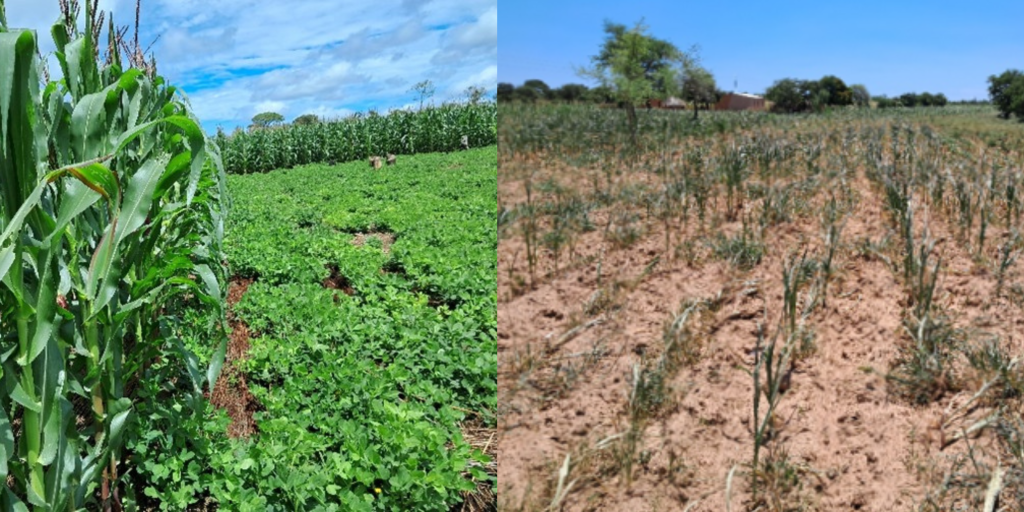
Unpacking El Niño’s impact in Zambia
El Niño presents a common challenge to both southern and northern Zambia, albeit with varying degrees of intensity and duration. The 2022/2023 season had above normal rainfall amounts, with extreme weather events, from episodes of flash floods and flooding to prolonged dry spells, especially over areas in the south. In the 2023/2024 season, the southern region has already experienced irregular weather patterns, including prolonged droughts and extreme temperatures, leading to water scarcity, crop failures, and significant agricultural losses. Although the growing season is nearing its end, the region has only received less than one-third of the annual average rainfall (just about 250 mm). Dry spells of more than 30 days have been experienced and, in most cases, coincide with the critical growth stages of flowering and grain-filling. A glance at farmers’ fields paints a gloomy picture of the anticipated yield, but all hope is not lost.
In contrast, the northern province stands out receiving above-average rainfalls beyond 2,000 mm, providing a different set of challenges for crop production. In this region, incidences of waterlogging are prominent although the effects are not as detrimental as the drought in the southern province. In general, crops in the northern province promise a considerable harvest as compared to the ones in the southern province.
Maize stover and its competing use
The scarcity of resources in southern Zambia extends beyond water availability, with the competition for maize stover, a valuable byproduct used for animal feed which can also be retained on the soil surface for fertility improvement and soil moisture conservation. With limited access to alternative fodder sources, farmers face challenges in meeting the nutritional needs of their livestock while maintaining soil fertility and conserving moisture. The struggle to balance the competing demands for maize stover underscores the complex dynamics of resource management in the region. This is further worsened by the low maize stover yield expected due to the dry conditions.
Implementing fodder trials, which include cultivating fodder crops like mucuna and lablab, intercropped or rotated with maize, offers a lifeline to farmers. While maize crops may wilt under the stress of El Niño-induced droughts, leguminous crops such as mucuna, lablab, cowpea, and groundnuts exhibit resilience, thriving in adverse conditions and providing a crucial source of food, feed, soil cover, and income for farmers. The ability of legumes to withstand environmental stressors highlights the importance of crop diversification in building resilience to climate change and ensuring food security in vulnerable regions.
Conversely, in northern Zambia, the abundance of agricultural resources allows for a more sustainable utilization of maize stover. Farmers have greater access to fodder alternatives and can implement integrated farming practices to optimize the use of crop residues. This enables them to mitigate the adverse effects of soil degradation and enhance livestock productivity, contributing to the resilience of their agricultural systems.
Use of more climate-smart crops
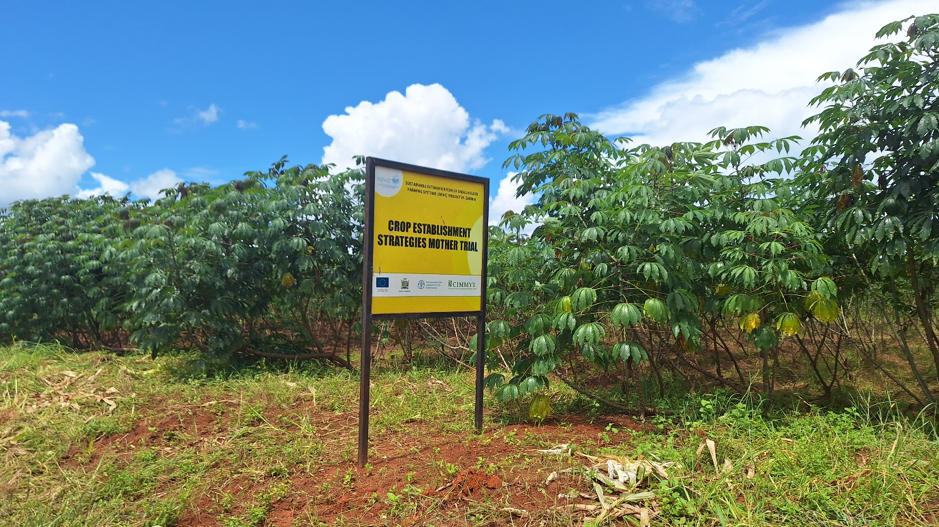
In southern Zambia, maize stands as the main crop, often supplemented with the integration of some leguminous crops integrated to some extent, to diversify the agricultural landscape. However, the relentless and longevity grip of El Niño has taken a negative toll on maize production, despite efforts to cultivate drought-tolerant varieties. As the dry spell persists, maize plants at the critical tasseling and silking stage face an uphill battle, as the dry and hot air has adversely impacted pollen and silk development.
The dissimilarity with the northern province, where cassava thrives from abundant water, is striking. This resilient crop, known for its drought tolerance, presents a promising alternative for farmers in the southern province grappling with erratic rainfall patterns. As climate change continues to challenge traditional agricultural practices, exploring resilient crops like cassava may offer a lifeline for communities striving to adapt and thrive amidst adversity.
In response to these radically different realities, the Sustainable Intensification of Farming Systems (SIFAZ) project, a collaborative effort of CIMMYT with FAO, the Ministry of Agriculture in Zambia, and the CGIAR Initiative on Diversification in East and Southern Africa, also known as Ukama Ustawi, have jointly promoted sustainable intensification practices to enhance the resilience of smallholder farmers.
The SIFAZ project is designed around the idea that strip crops and intercrops can add nutritional and economic value to Conservation Agriculture (CA) systems for smallholder farmers in Zambia. While traditional yield metrics provide some insight across the several intercropping treatments being tested on-farm, the true benefits of these cropping systems extend beyond mere output. SIFAZ recognizes the diversification synergy, emphasizing that “two crops are better than one.”
However, the outcomes of the SIFAZ project and the CGIAR Initiative on Diversification in East and Southern Africa have varied over the years between the two regions, reflecting the discrepancy in their agricultural landscapes.
Notably, regional differences in the adoption and success of these cropping systems have become apparent. In the northern province, crop-centric approaches prevail, leading to a higher concentration of successful crop farmers. Meanwhile, in the southern province, mixed systems that incorporate mixed crop-livestock systems achieve desirable effects. These findings highlight the importance of tailoring agricultural interventions to suit the specific needs and conditions of diverse farming communities.
Navigating the complex challenges of climate change requires a multifaceted approach that acknowledges the unique realities of different regions. By embracing adaptive strategies, harnessing indigenous knowledge, and fostering collaborative partnerships, Zambia can forge a path towards a more resilient and sustainable agricultural future, where farmers thrive despite the uncertainties of a changing climate.
Bargaining for Better: How gender roles in household decision-making can impact crop disease resilience
‘A better understanding of the links between gender roles in household decision-making and the adoption of technologies can enhance the uptake of innovations in smallholder farming systems,’ concludes a recently published paper by CIMMYT. The paper connects women’s bargaining power in households with the adoption of rust resistant wheat varieties, based on the work of Accelerating Genetic Gains in Maize and Wheat (AGG) in Ethiopia.
“While an emerging body of literature finds positive correlations between women’s influence in household decision-making and socioeconomic, health, and nutritional outcomes, few studies have analyzed the links between intra-household decision-making and the adoption of agricultural technologies,” said Michael Euler, agriculture research economist at CIMMYT.
A case study in Ethiopia
For this study, researchers used a dataset from Ethiopian wheat-producing households.
Ethiopia is the second-largest wheat producer in Africa, with an aggregate grain production of 5.5 million metric tons and 4-5 million farmers engaged in cultivation. The Ethiopian Highlands are a hot spot for wheat rust. With recurrent epidemics in the last decade, the emergence of new strains of wheat rust increased production risks. On the positive side, farmers seem to be responsive to the management of rust diseases. Rust-resistant bread wheat varieties, released since 2010, have been widely adopted by smallholder farmers across Ethiopia.
The CIMMYT study surveyed 1,088 wheat-producing households in Ethiopia to analyze the links between women’s role in household decision-making concerning crop production and the adoption and turnover rates of rust-resistant wheat varieties. Female and male members from the same households responded separately, which facilitated capturing individual perceptions and the intra-household dynamics in decision-making.

Intra-household decision-making arrangements and wheat varietal choice
Overall, the study reveals a positive association between women’s role in decision-making regarding the selection of wheat seed and the adoption of rust-resistant wheat varieties and wheat varietal turnover. Findings may be related to differences in risk aversion between women and men farmers. While women farmers may tend to advocate for the adoption of rust resistant varieties to avoid potential financial difficulties that arise from purchase of fungicide in the growing season, men farmers may be more inclined to adopt high yielding varieties and use fungicides to combat rust within the season.
Spouses may agree or have different opinions regarding their decision-making roles. Spousal agreement on the woman having a role in making crop variety decisions is associated with higher adoption rates compared to spousal agreement that the woman has no role. Joint decision-making with mutually uncontested spousal roles may yield better outcomes due to larger combined exposure to information, as well as spousal discussion and reflection on potential implications of the varietal choice decision.
Conclusion: It is about negotiation, contestation and consensus
Household decisions, including the decision to adopt agricultural technologies often result from negotiation, contestation, and consensus between wife and husband. This process is shaped by diverging interests, motivations and objectives, while its results are determined by different levels of individual bargaining power. “Our findings indicate that women’s ownership of agricultural land and household assets is strongly associated with their active role in household decisions on wheat varietal choice, and with spousal agreement,” said Moti Jaleta, senior agricultural economist at CIMMYT. The dynamics in intra-household decision-making are likely to influence households’ adoption of agricultural technologies.
Disregarding the dynamics in decision-making implies that households are unilateral decision-makers, a scenario which probably does not hold true considering the level of spousal disagreement regarding their roles and influence in choosing crop varieties. A deeper understanding of the connections between gender dynamics in household decision-making and adoption choices can enhance the efficiency of public extension systems, increase the adoption rates of modern innovations, improve agricultural productivity, and enhance livelihoods in smallholder agriculture.
Read the complete paper here.
Bridging gender gaps by nurturing women scientists
Lourine Bii, 33, is a pioneer as the first female technician at the Kiboko Plant Breeding Station. Moving from KALRO to CIMMYT, she is independently managing trials and breaking gender barriers in agricultural research. Her journey illustrates the importance of inclusivity and empowerment in shaping the future of agriculture.
Read the full story.

